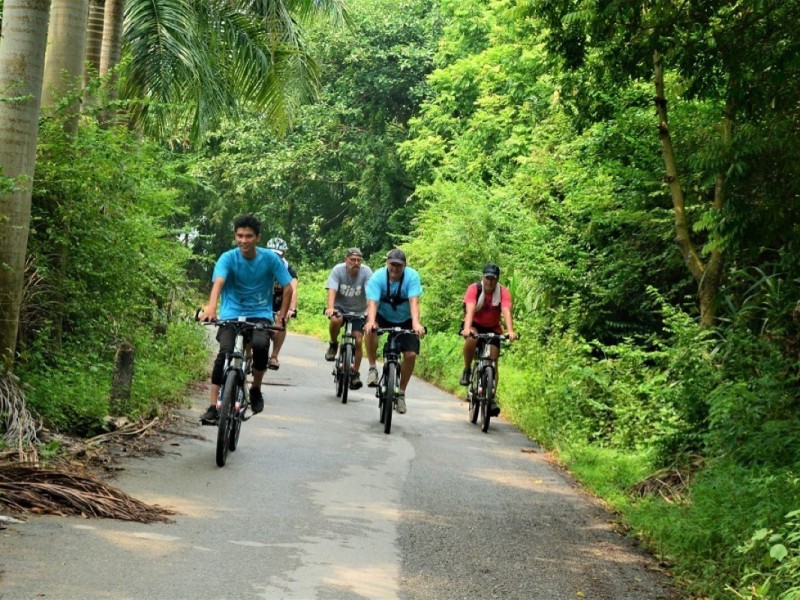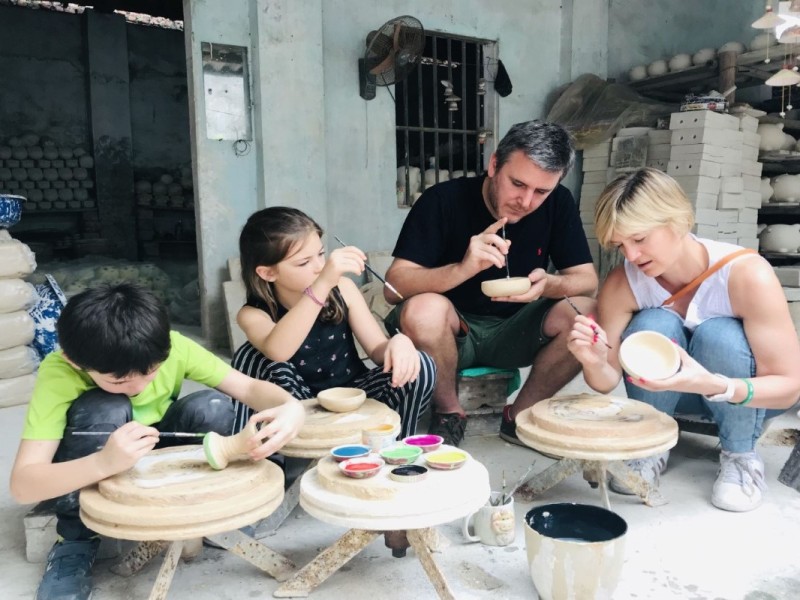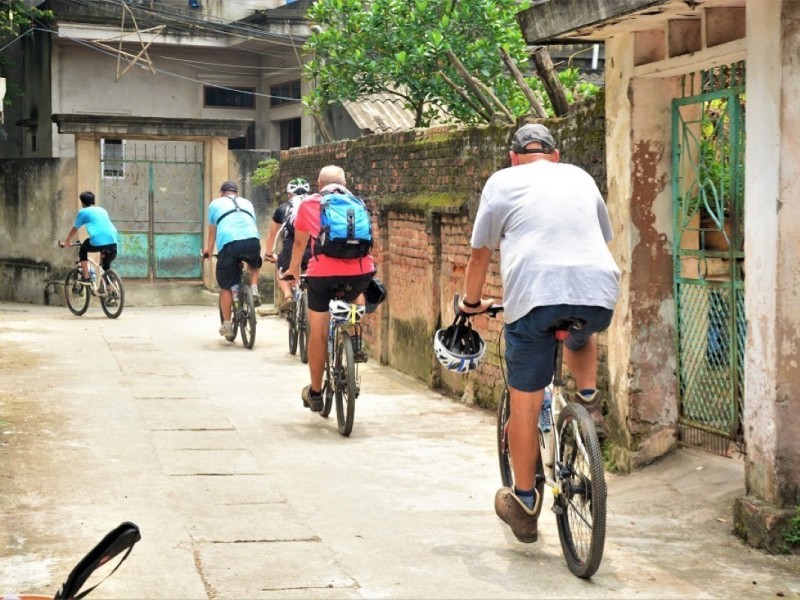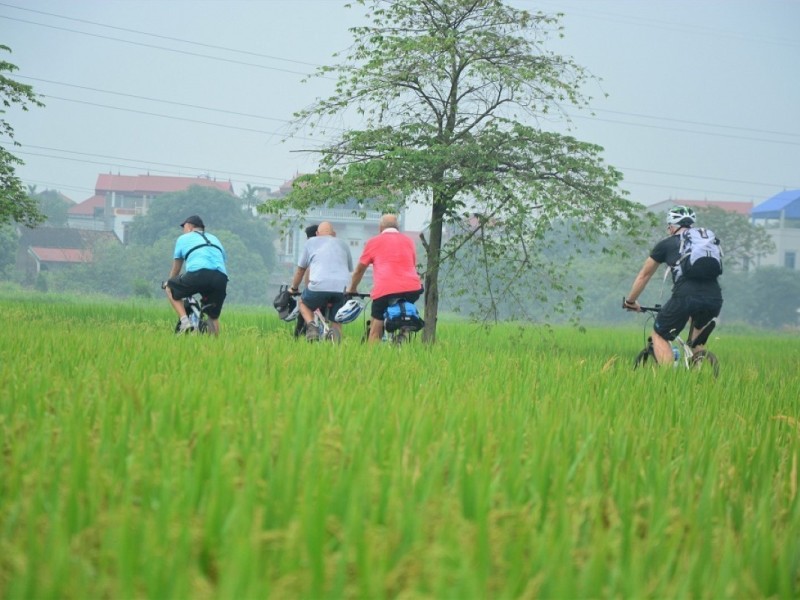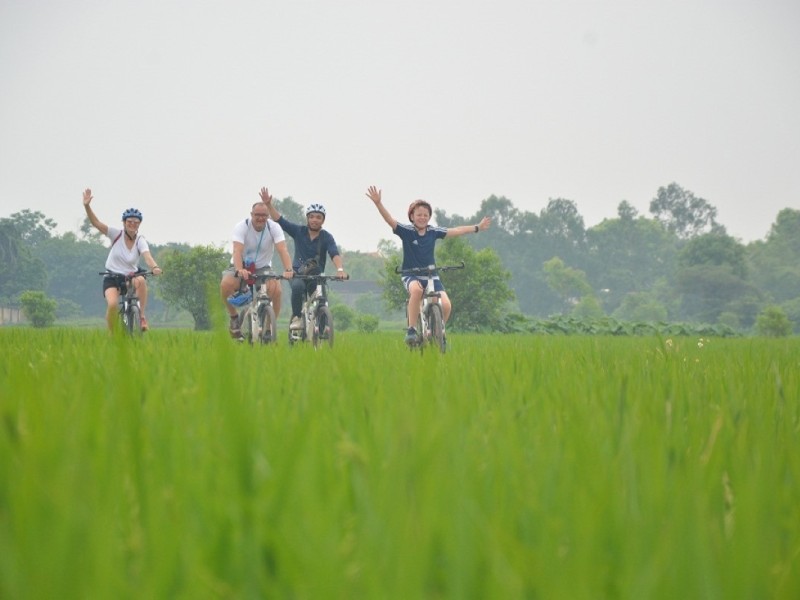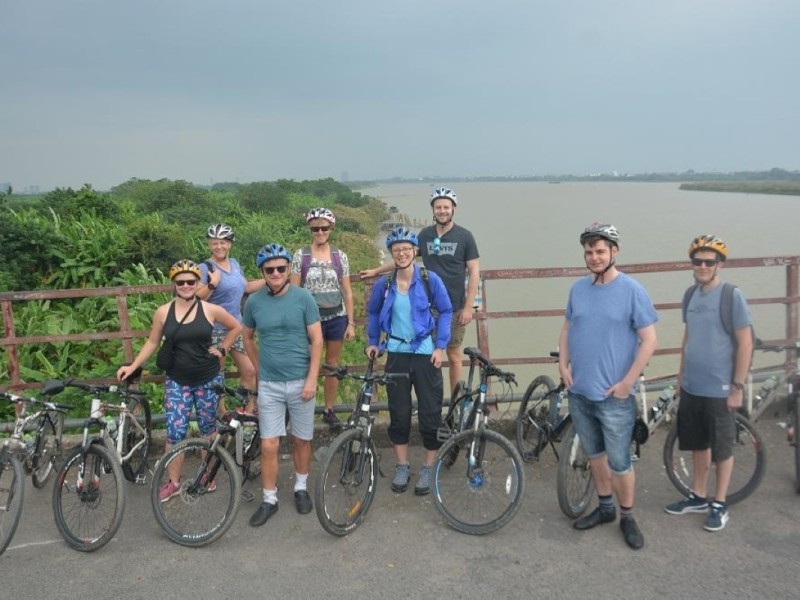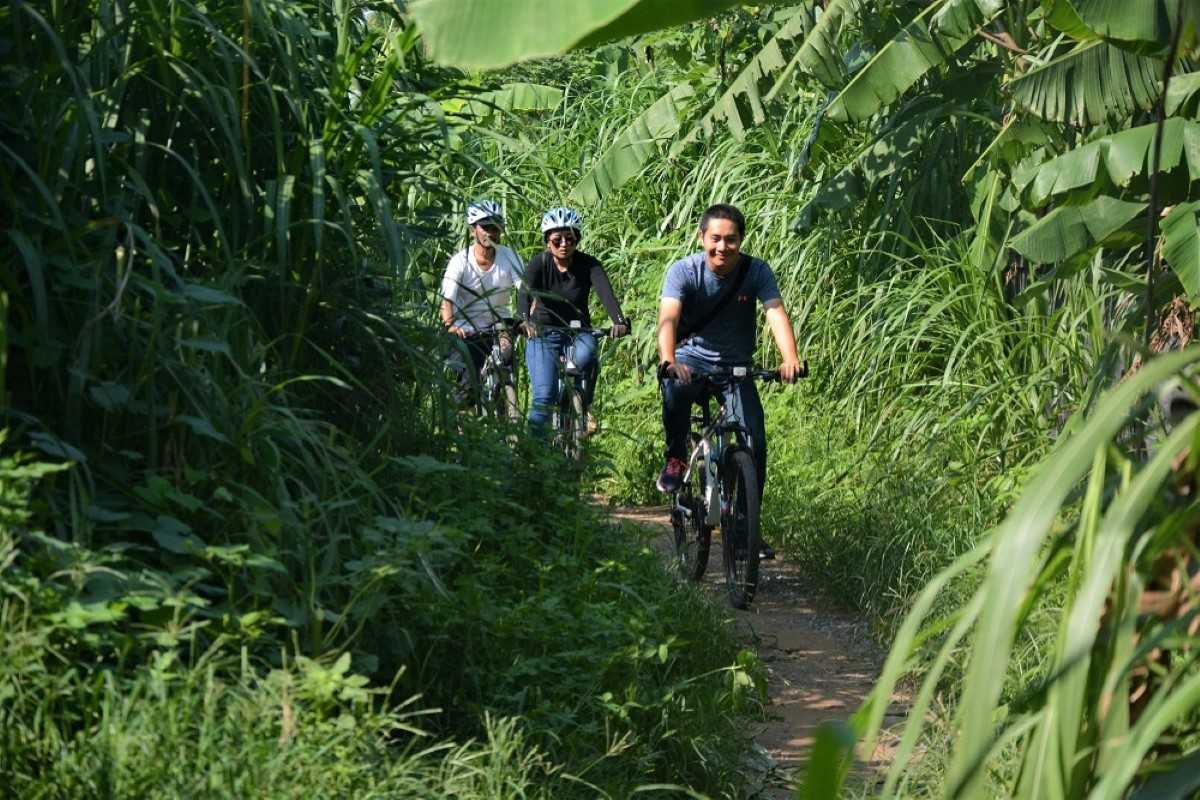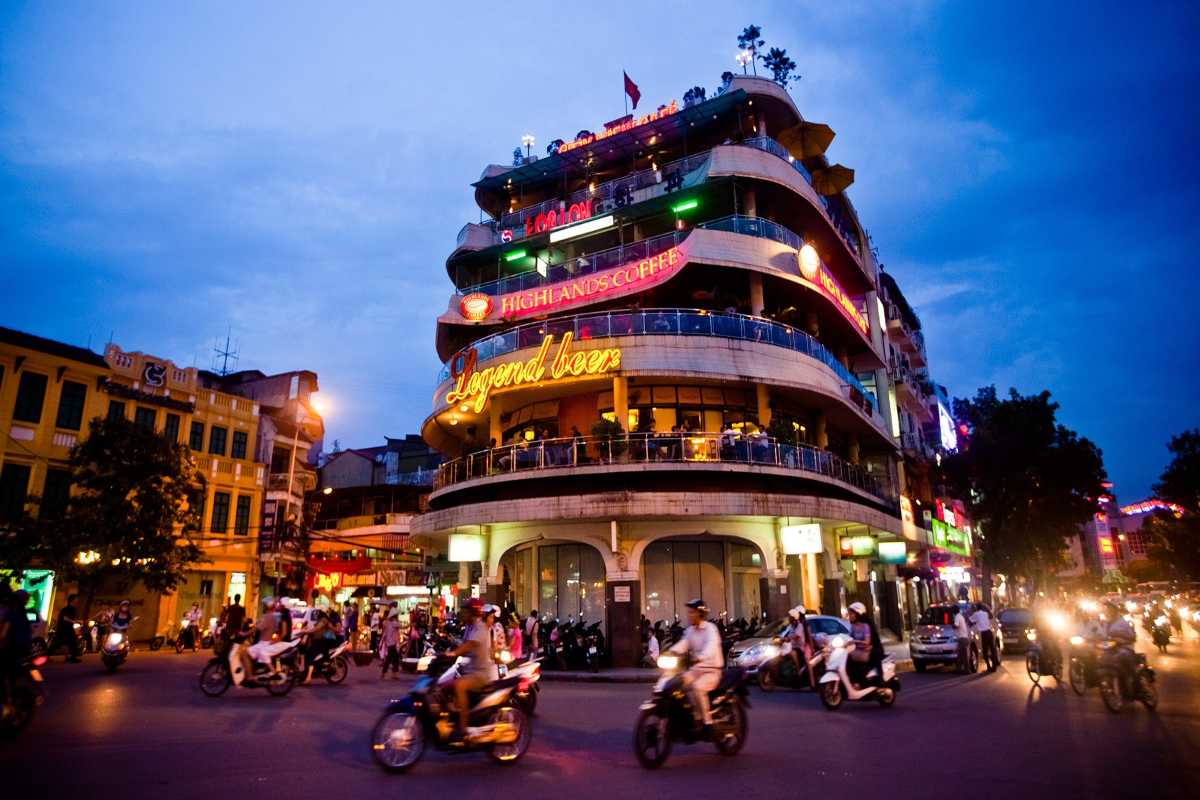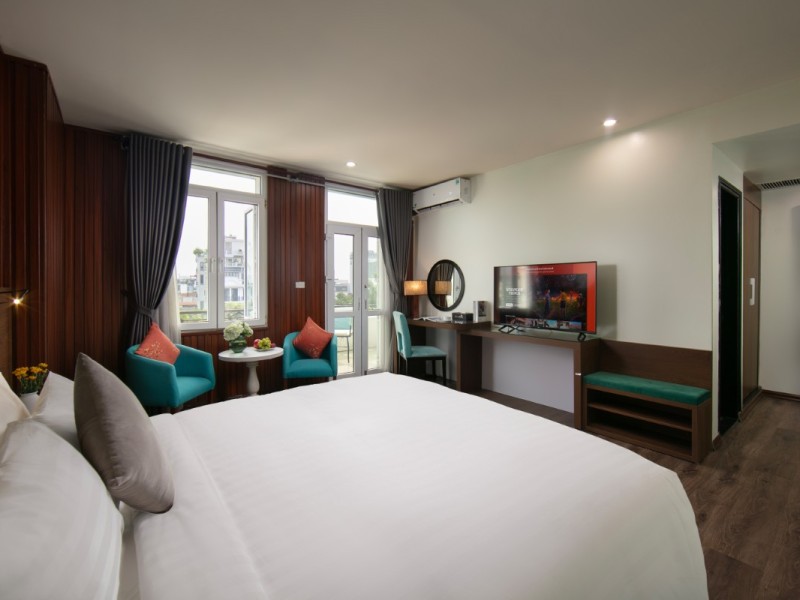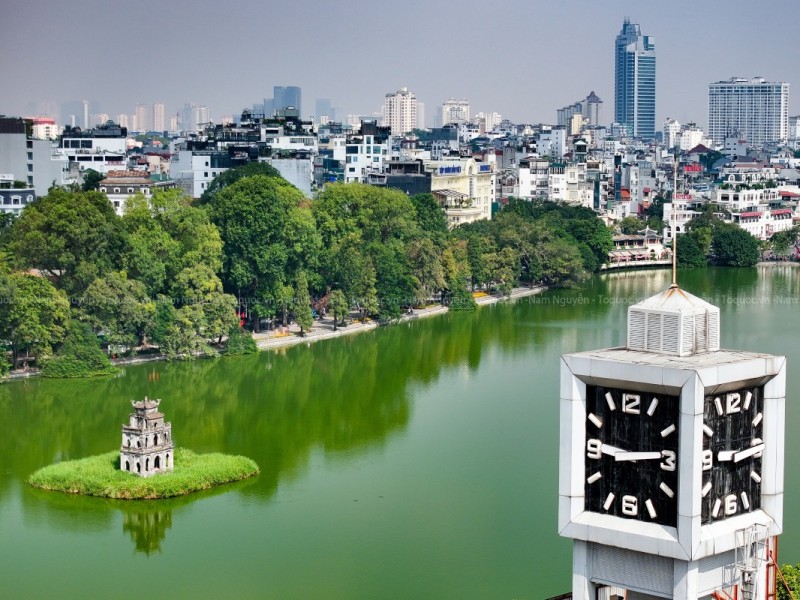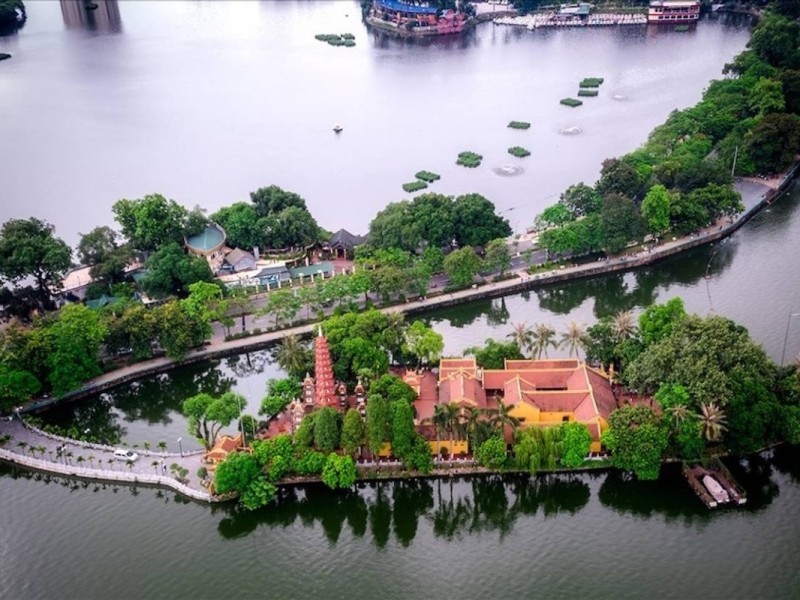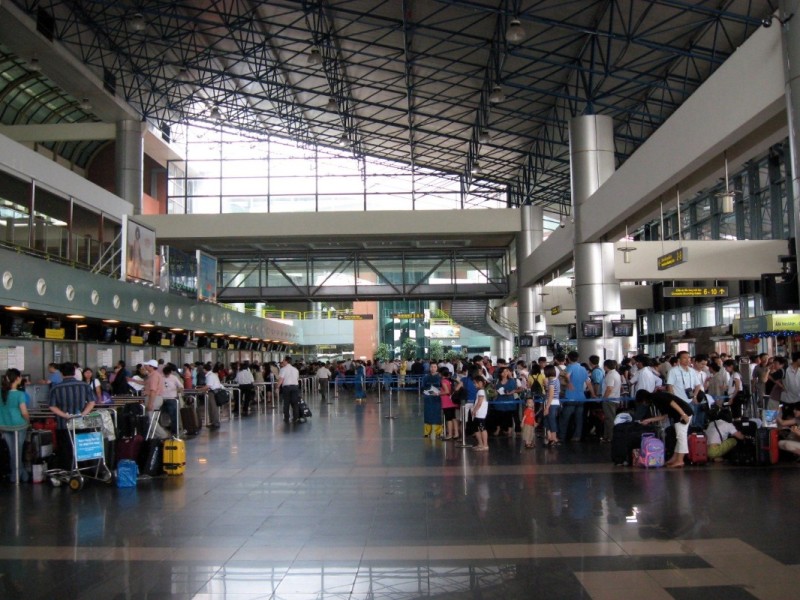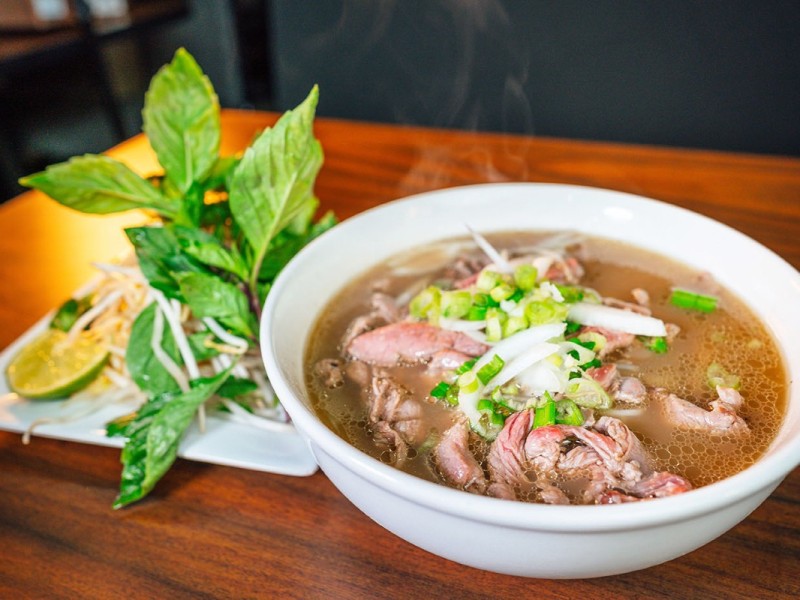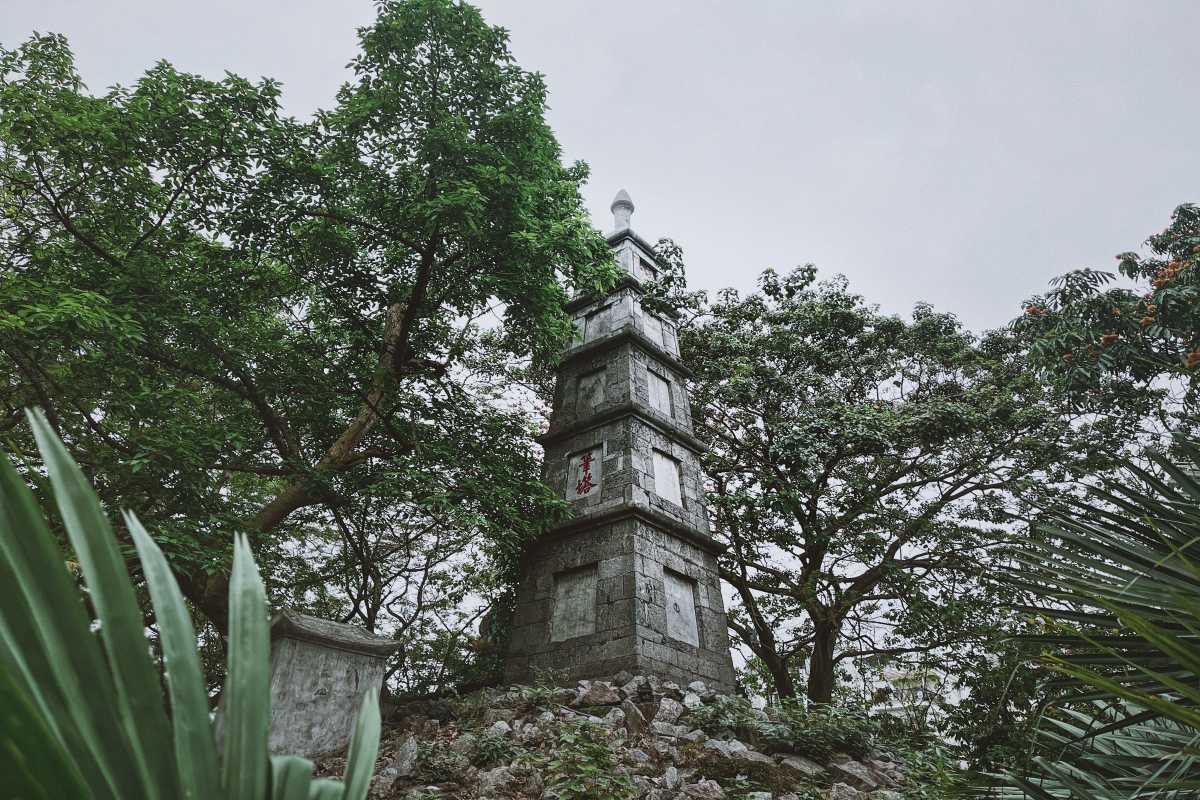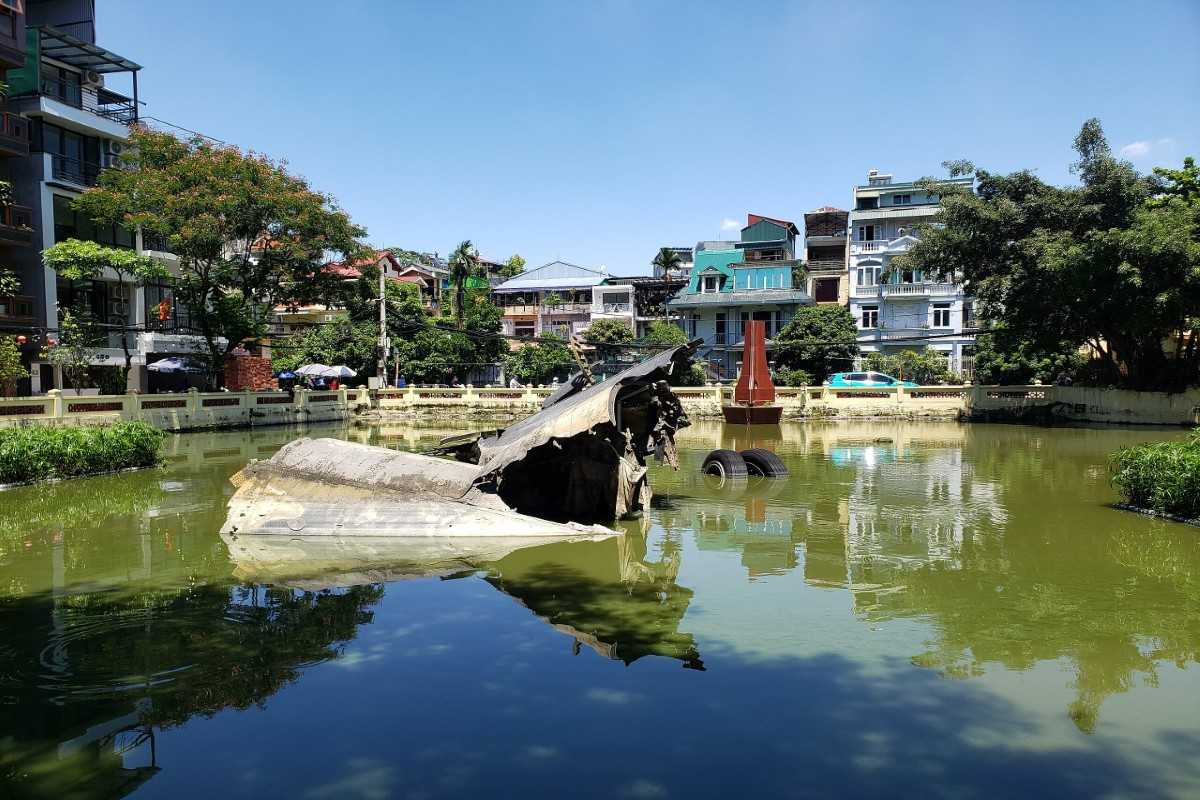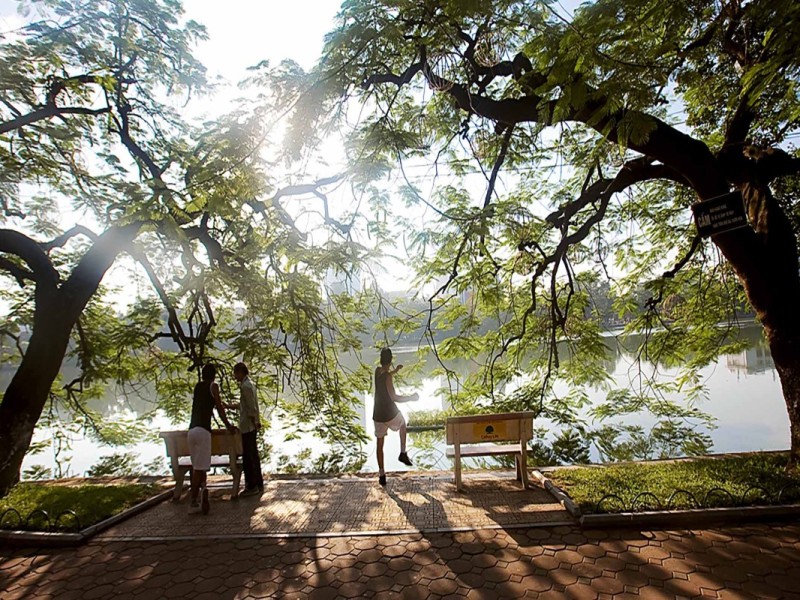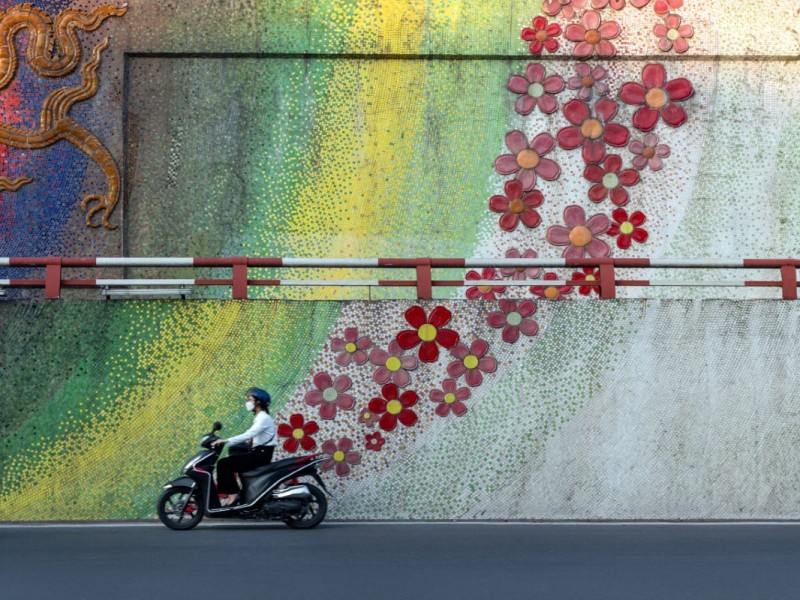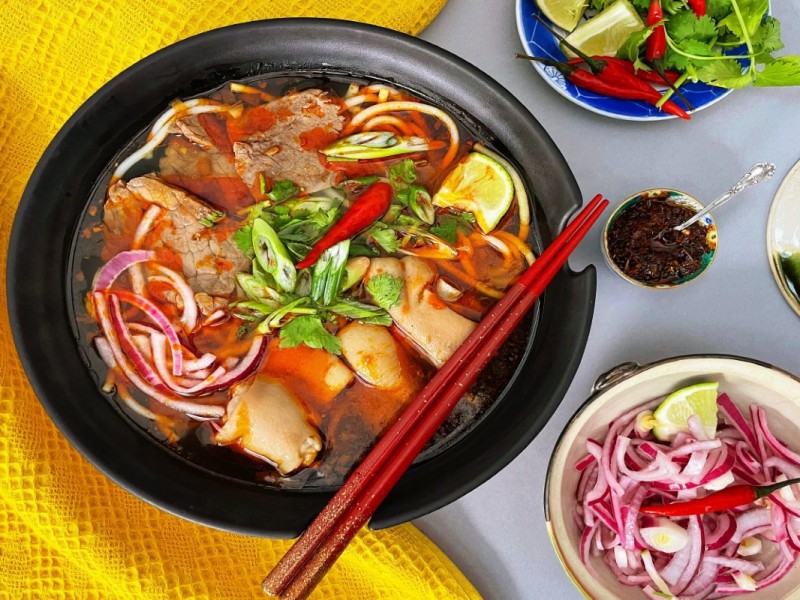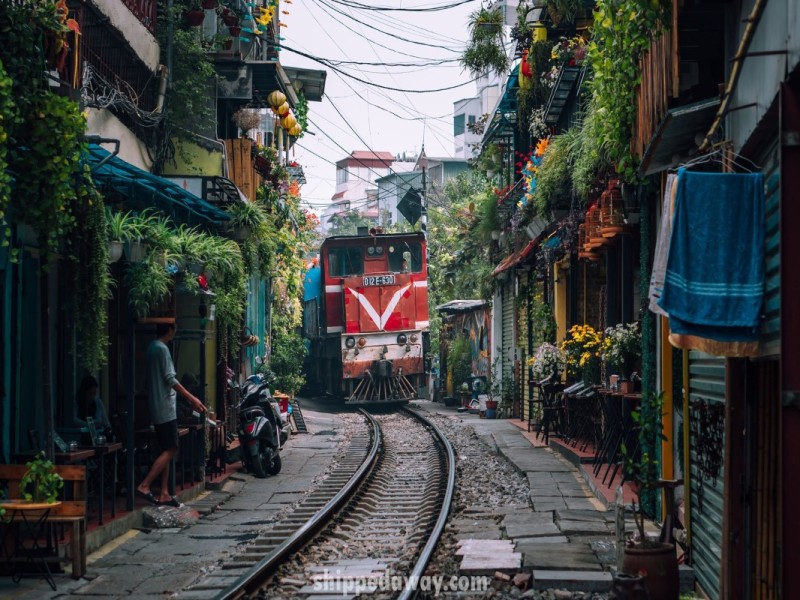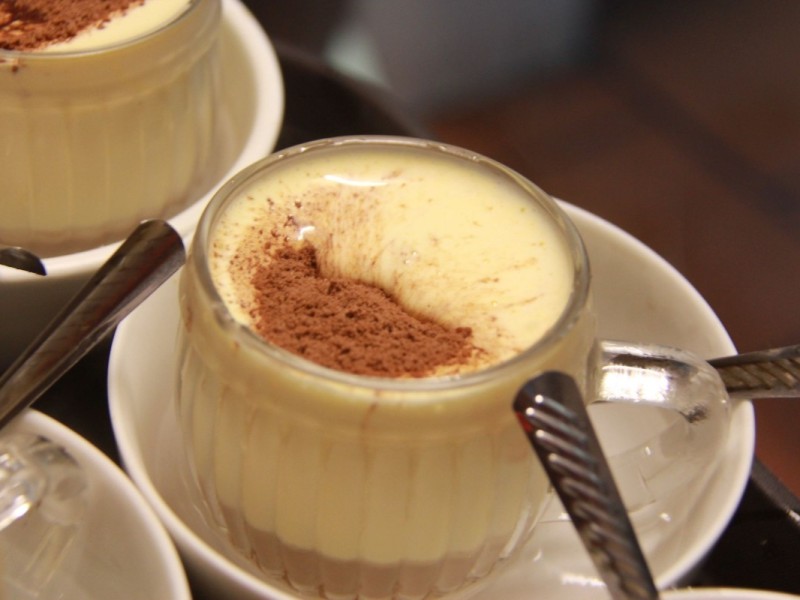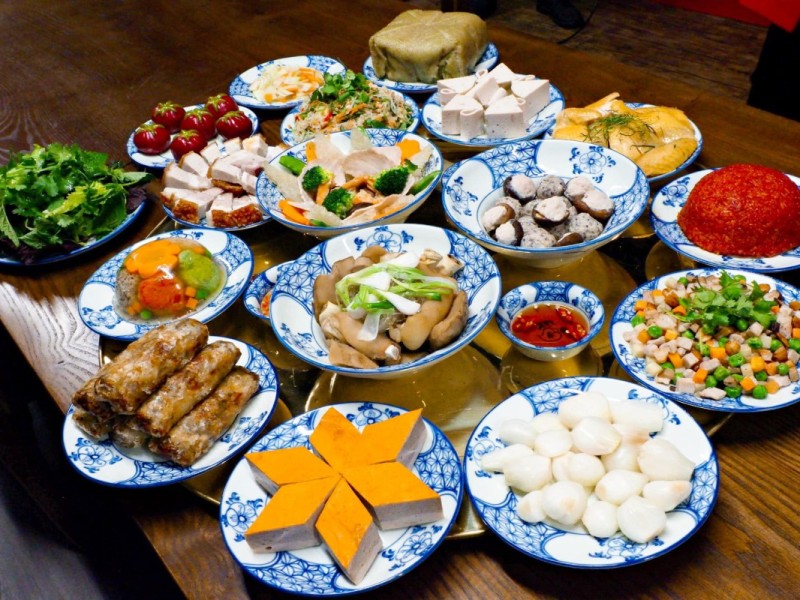Hanoi Presidential Palace: History, Visitor Guide & Travel Tips
Hanoi Presidential Palace showcases French colonial architecture and Vietnam’s rich history. Visitors can explore its serene gardens, learn about Ho Chi Minh’s legacy, and experience a unique blend of cultural heritage and national pride in the heart of Hanoi. This site offers a peaceful escape amid the bustling city.
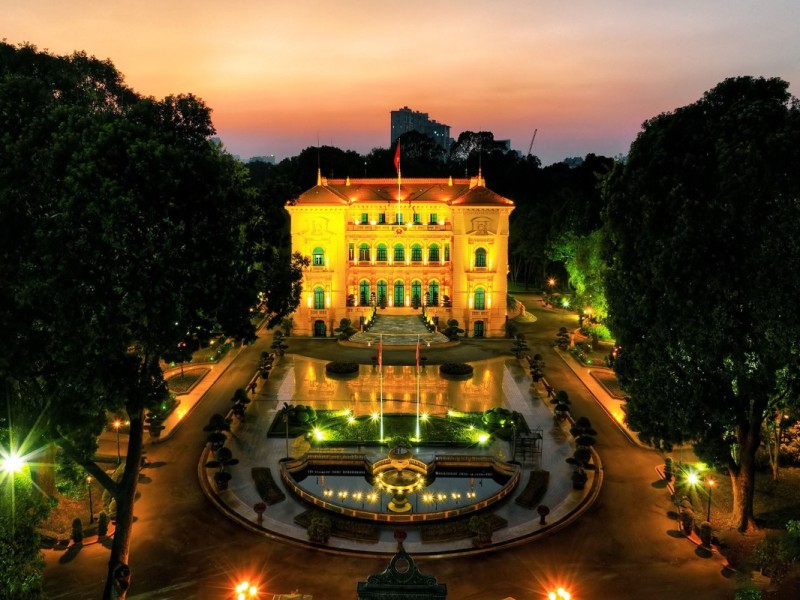
Welcome to Hanoi Presidential Palace: What Makes It Special
The Hanoi Presidential Palace holds a unique place in Vietnam’s history. Built by the French colonial administration as the residence for their Governor-General, this grand building reflects the elegance and authority of colonial power. However, it later became closely linked with Hồ Chí Minh, who chose to live nearby in a modest stilt house instead of the palace itself. This choice symbolized humility and the spirit of Vietnamese independence. Today, the palace stands as a proud emblem of the nation’s complex past and its journey toward freedom. Visitors are drawn not only to its impressive architecture but also to the peaceful gardens and the rich stories woven into its grounds. Whether you are fascinated by history, architecture, or simply seeking a serene spot in bustling Hanoi, this site offers a meaningful experience that captures the heart of Vietnamese heritage.
Plan your visit to the Hanoi Presidential Palace and immerse yourself in the stories that make it so special.
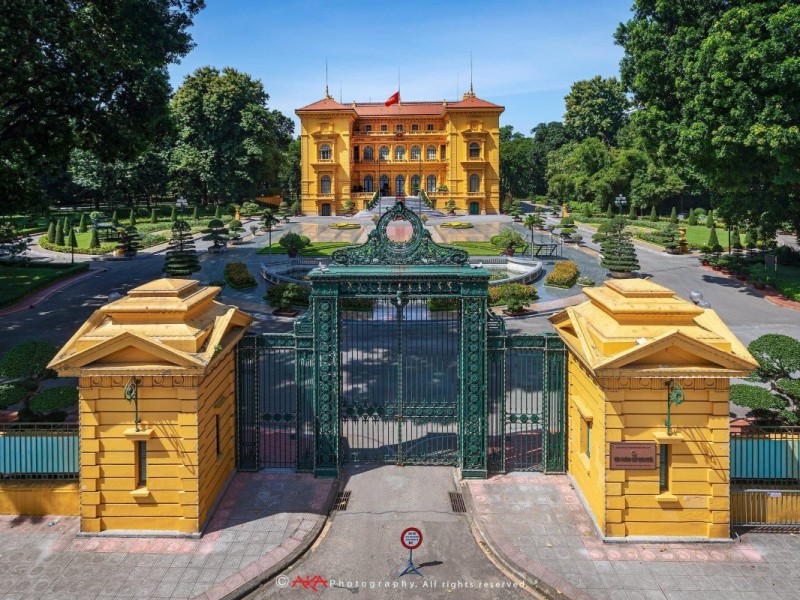
A Quick Snapshot of the Palace’s Significance
The Hanoi Presidential Palace was originally constructed as a symbol of French colonial power, designed to house the Governor-General of Indochina. Its architecture embodies French colonial style, with grand facades and elegant details that contrast sharply with traditional Vietnamese buildings. Later, the palace gained additional significance when Hồ Chí Minh selected the adjacent stilt house as his residence, a powerful statement of simplicity and connection with the people. Though he never lived inside the palace itself, the building remains a testament to the historical shifts from colonial rule to Vietnamese independence. Today, it stands as a cultural landmark and a site of national pride, drawing visitors eager to witness this blend of history and symbolism.
Explore this remarkable site to understand its pivotal role in shaping modern Vietnam.
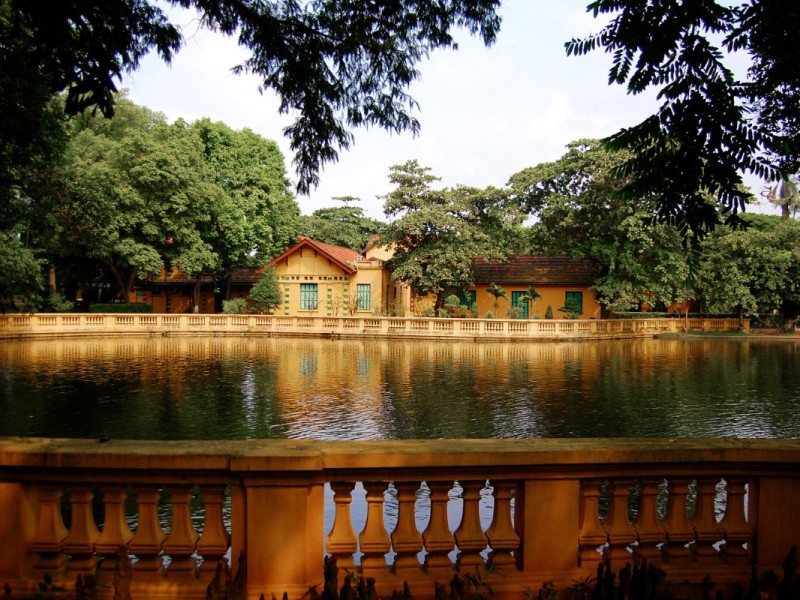
Why This Site Should Be on Your Hanoi Travel List
The Hanoi Presidential Palace appeals to a wide range of travelers. History buffs will appreciate the deep layers of Vietnam’s past embodied here, from colonial rule to the fight for independence. Architecture enthusiasts can admire the elegant French colonial design paired with serene gardens that provide a peaceful retreat. For those seeking tranquility amid the busy city, the palace grounds offer a calm and reflective atmosphere. The strong connection to Hồ Chí Minh adds emotional depth, making the visit more than just sightseeing—it’s an encounter with Vietnamese identity and resilience.
Including the Hanoi Presidential Palace in your travel plans means immersing yourself in culture, history, and beauty all at once.
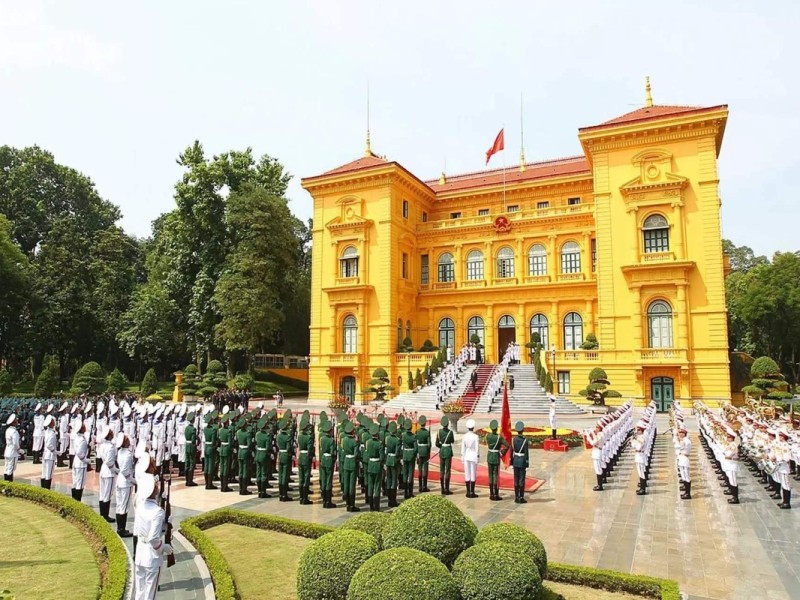
What You’ll Find in This Guide
This guide offers a complete look at the Hanoi Presidential Palace to help you plan a rewarding visit. You’ll find detailed historical context that unpacks the palace’s past, practical visitor information like opening hours and ticket prices, insider tips to make your experience smoother, and genuine traveler perspectives that bring the place to life. Whether you’re visiting for the first time or returning to explore deeper, this guide ensures you have everything you need for a meaningful and memorable trip.
Use this guide to navigate the palace with confidence and enjoy every moment of your Hanoi adventure.
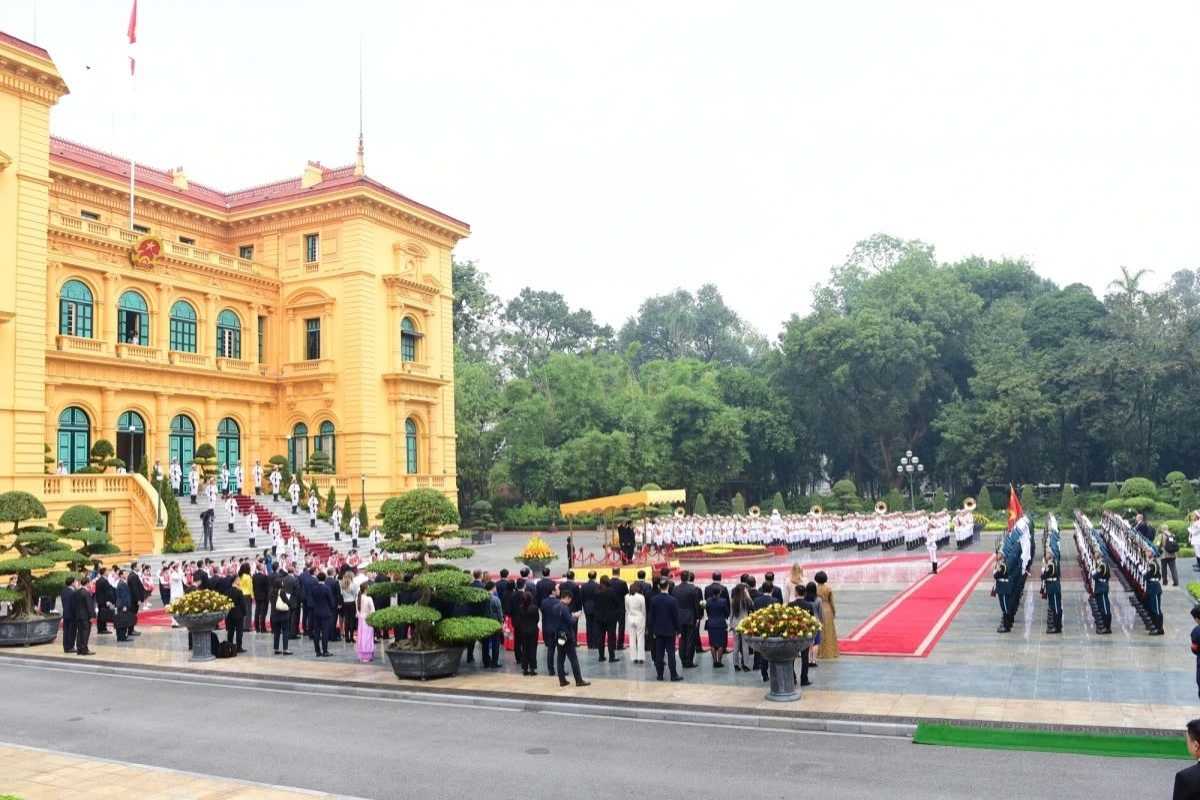
Discovering the Rich History of Hanoi Presidential Palace
The Hanoi Presidential Palace is a remarkable symbol of Vietnam’s history. Built between 1900 and 1906, it was designed by the French architect Auguste Henri Vildieu in a blend of Neoclassical and Belle Époque styles. Originally, it served as the residence for the French Governor-General during the colonial era, showcasing grandeur and power. Its elegant architecture features large windows, ornate columns, and spacious halls, all designed to impress and function well in the tropical climate. After Vietnam gained independence, Hồ Chí Minh chose not to live in the palace but instead opted for a simple stilt house nearby, reflecting his humility and connection to the Vietnamese people. Today, the palace remains a significant cultural landmark where official ceremonies take place, reminding visitors of the nation’s colonial past and its resilient journey toward freedom.
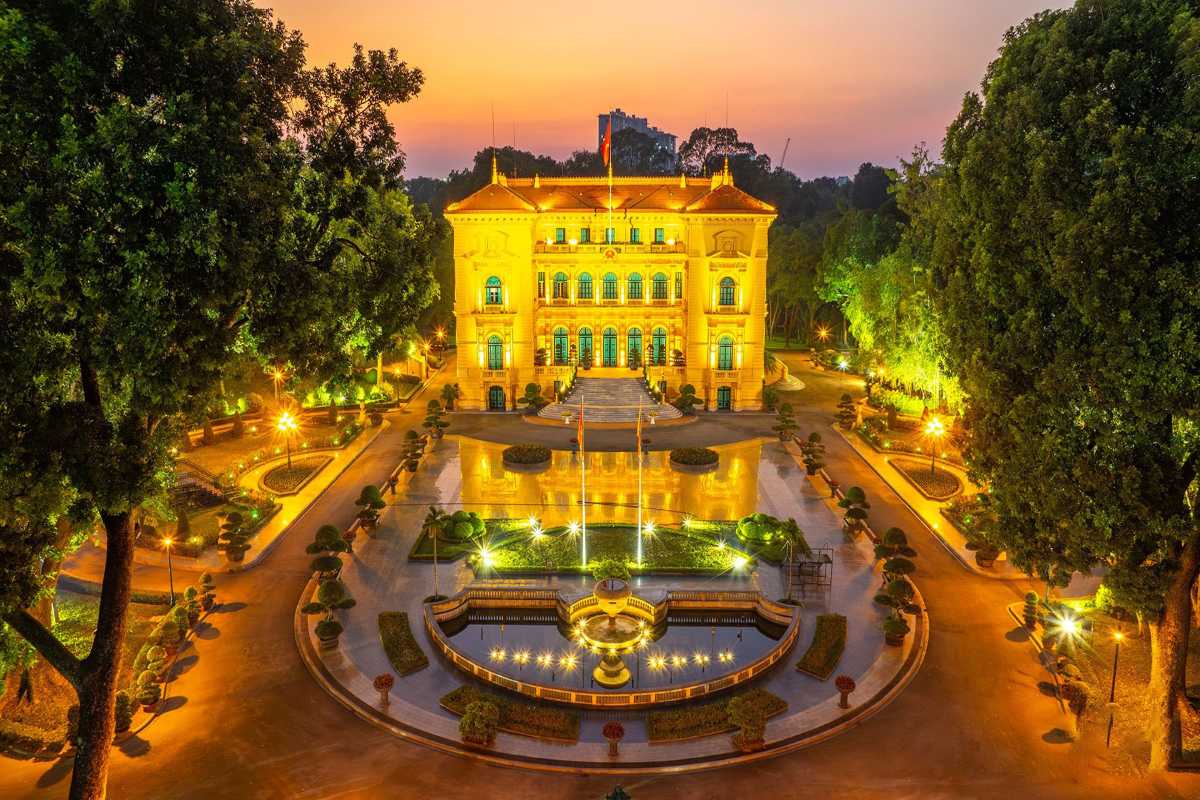
The Origins and Construction of the Palace
The Hanoi Presidential Palace showcases exquisite French colonial architecture, mixing Neoclassical grandeur with Belle Époque elegance. The building’s design features symmetrical layouts, high ceilings, marble floors, and expansive verandas suited for Hanoi’s hot climate. It was constructed using quality materials that have stood the test of time, symbolizing French colonial authority in Indochina. This palace stands alongside other notable colonial buildings in Hanoi, such as the Opera House, reflecting the influence of French urban planning and architectural styles introduced in the early 20th century. The palace was meant to be a statement of power and sophistication, blending European aesthetics with practical adaptations for local conditions.
French colonial architecture and design influences
The Hanoi Presidential Palace reflects distinct elements of French colonial architecture, blending European styles with practical adaptations for Vietnam’s climate. This fusion created a unique building that symbolized both power and cultural exchange.
- Neoclassical Style: Features symmetrical layouts, grand columns, and ornate facades inspired by classical European architecture.
- Belle Époque Elements: Decorative details and elegance typical of the late 19th to early 20th centuries, visible in the palace’s refined stonework.
- Climate Adaptations: Large French windows and wide verandas allow ventilation, suited for Hanoi’s humid weather.
- Use of Local Materials: Marble floors and carved wood accents integrate local craftsmanship with European design.
- Influence on Hanoi: The palace’s architecture set a standard for other colonial buildings in the city and region.
These architectural features make the palace a prime example of colonial-era design, blending style and function seamlessly. When visiting, take time to observe these details that reveal its historical and cultural significance.
Key figures behind the palace’s creation
The construction of the Hanoi Presidential Palace was shaped by important figures who played key roles in its design and political context.
- Auguste Henri Vildieu: The French architect responsible for the palace’s design and several other notable colonial structures in Indochina.
- French Colonial Officials: The palace was commissioned by the Governor-General as a symbol of French authority.
- Political Context: Built during the early 1900s when France was consolidating control over Indochina.
- Urban Planning Influence: Part of broader efforts to modernize Hanoi and establish it as a colonial capital.
- Legacy: These figures contributed to a building that remains an architectural and historical landmark today.
Understanding these individuals and their vision helps to appreciate the palace beyond its physical form, adding depth to its story. Be sure to reflect on this rich history as you explore the site.
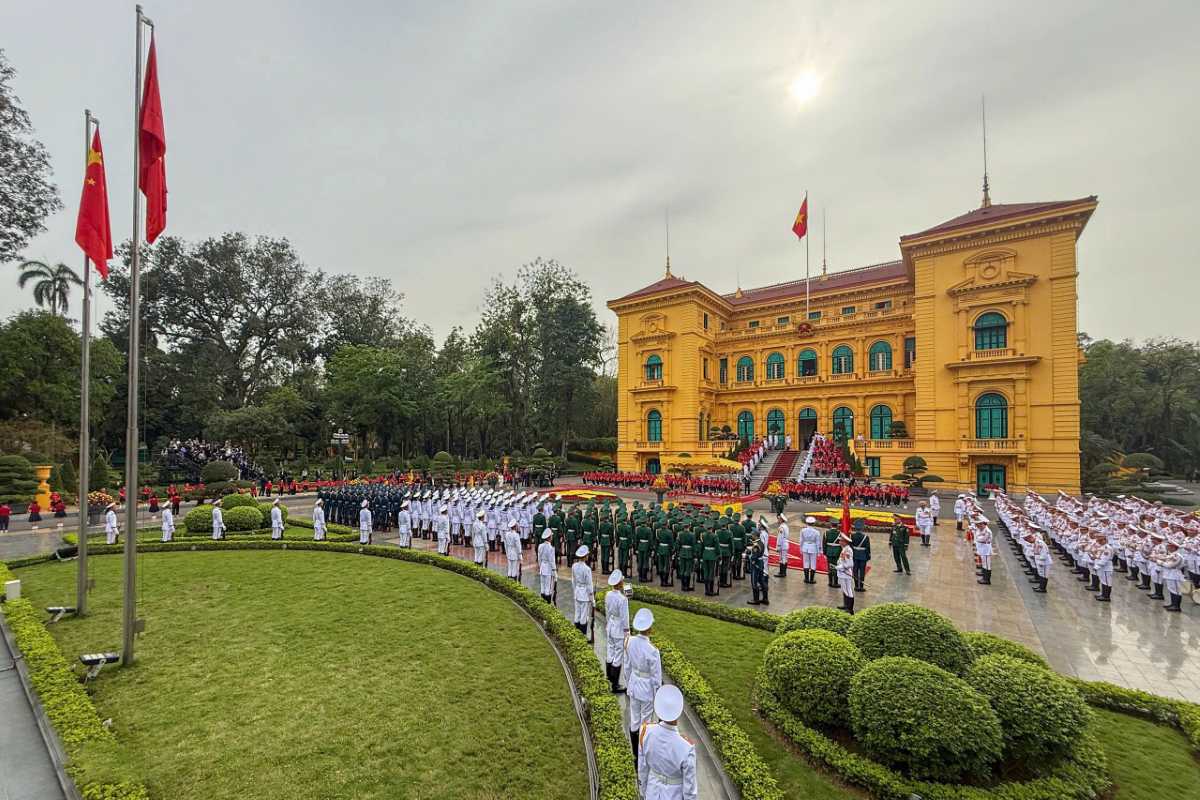
The Palace’s Role During French Colonial Rule
The Hanoi Presidential Palace served as the administrative and ceremonial center for French Indochina. It was the official residence of the Governor-General, the highest-ranking French official overseeing the region. The palace was a key location for political meetings, receptions, and official events, symbolizing the authority and control of the French colonial regime. Its grand architecture and prominent location underscored its role as a visible symbol of colonial power.
Understanding this function is crucial to appreciating the palace’s historical importance within Vietnam’s colonial past.
Function as the Governor-General’s residence
During the French colonial period, the palace played a vital role as the administrative and ceremonial heart of French Indochina.
- Official Residence: Served as home to the Governor-General, the top colonial official in the region.
- Diplomatic Venue: Hosted foreign dignitaries and official guests.
- Ceremonial Site: Venue for important colonial events and government functions.
- Symbol of Power: Represented French political and cultural dominance in Vietnam.
- Administrative Hub: Center for decision-making and colonial governance activities.
This multifaceted function cemented the palace’s importance in colonial administration and left a lasting mark on Hanoi’s history. Visitors today can see how power was projected through architecture and ceremony.
Political and cultural significance in early 20th century Hanoi
The palace influenced more than governance; it shaped the city’s social and cultural landscape.
- Urban Development: Anchored the Ba Dinh District’s design and infrastructure expansion.
- Social Hierarchy: Embodied colonial social divisions between French rulers and local Vietnamese.
- Cultural Events: Hosted gatherings that introduced French customs and cultural norms.
- Colonial Symbolism: Visible reminder of foreign dominance in daily life.
- Legacy: Helped define Hanoi’s character during the colonial era and beyond.
Recognizing this broader significance allows visitors to understand the palace’s role in shaping Hanoi’s identity. It remains a powerful cultural landmark that connects past and present.
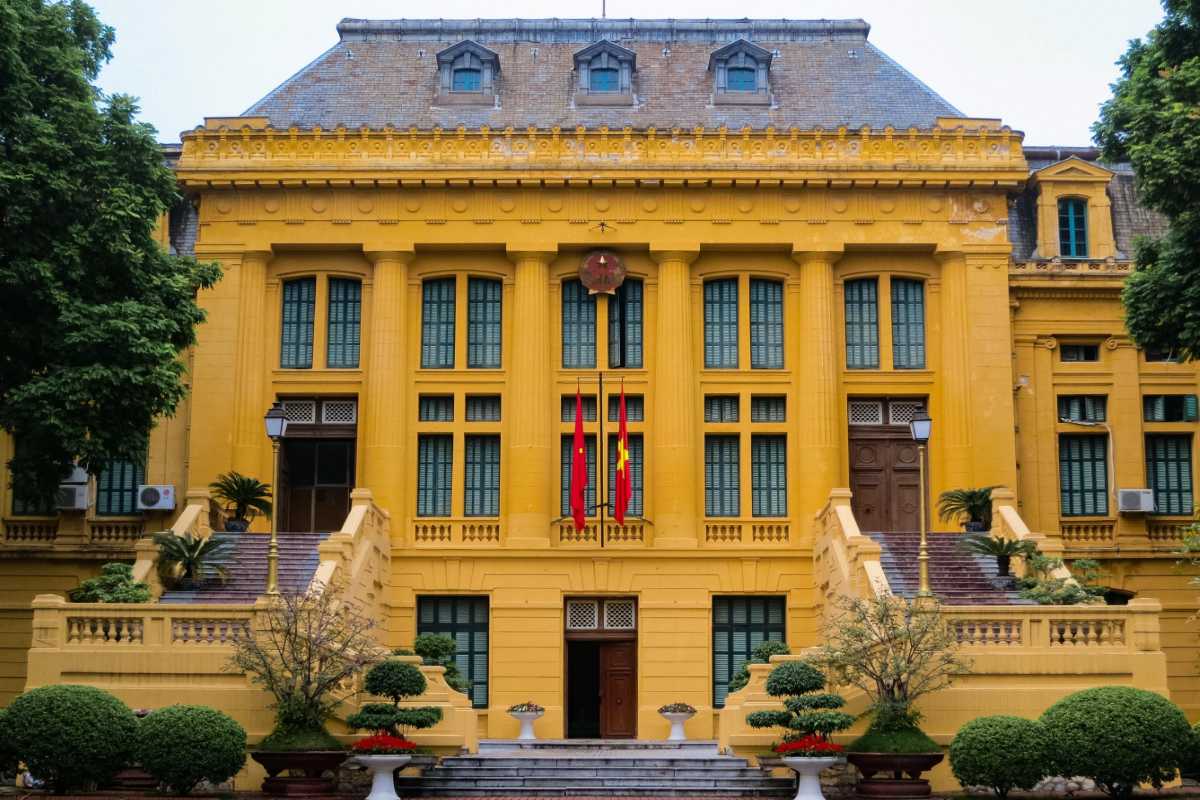
Transformation After Vietnamese Independence
After Vietnam gained independence, the meaning and use of the Hanoi Presidential Palace changed profoundly. Although the palace was grand and imposing, Hồ Chí Minh chose to live in a simple stilt house nearby instead of occupying the palace itself. This choice carried deep symbolism, reflecting humility, simplicity, and a focus on national liberation rather than colonial grandeur. The palace no longer served as a residence but became a venue for official state receptions and ceremonies. It remains a powerful symbol of Vietnam’s sovereignty and the country’s journey toward self-determination.
Hồ Chí Minh’s choice of residence and symbolism
After independence, Hồ Chí Minh made a deliberate choice that spoke volumes about his values.
- Humble Stilt House: Opted for a simple home near the palace instead of the grand residence.
- Symbol of Humility: Rejected colonial luxury to connect with ordinary Vietnamese.
- National Liberation Focus: Emphasized modest living as part of revolutionary ideals.
- Political Statement: His choice embodied simplicity and dedication to the people.
- Lasting Symbolism: The stilt house remains a revered site representing Vietnamese spirit.
This decision continues to inspire visitors and highlights the profound cultural meaning behind the palace grounds. Reflect on this as you explore the area.
Evolution of the palace’s function in modern Vietnam
The Hanoi Presidential Palace has adapted to Vietnam’s changing political landscape.
- Official Venue: Now hosts state receptions, diplomatic meetings, and ceremonies.
- Cultural Heritage Site: Preserves historical architecture and symbolism.
- Tourist Attraction: Educates visitors about Vietnam’s colonial and post-colonial history.
- Symbol of Sovereignty: Represents Vietnam’s independence and national pride.
- Restricted Access: Some areas remain closed to maintain security and dignity.
Understanding this modern role enriches the visitor experience, showing how history and present-day governance intertwine. Plan your visit to appreciate both aspects.
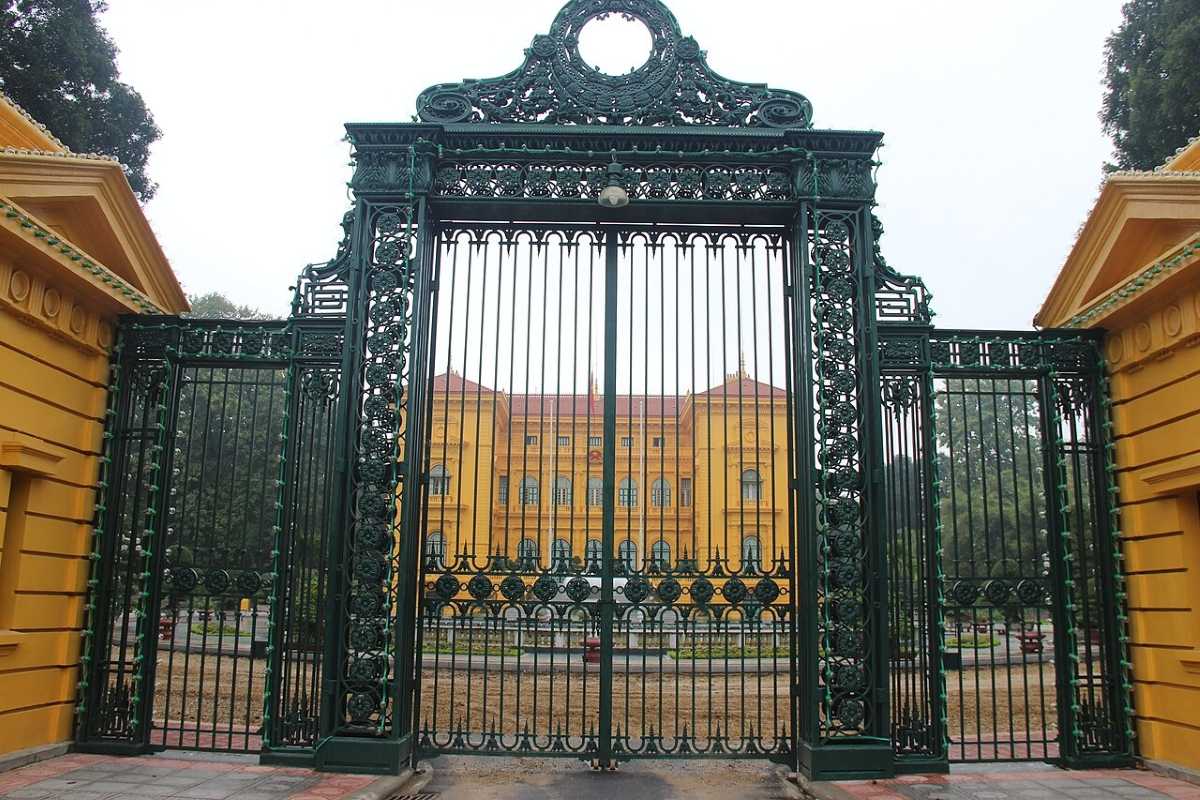
Unique Stories and Little-Known Facts
The Hanoi Presidential Palace is filled with personal stories and hidden details that bring its history to life. Beyond the grand architecture, visitors can discover intimate anecdotes about Hồ Chí Minh’s daily routines and the subtle design elements that enrich the site’s cultural depth.
Anecdotes about Hồ Chí Minh’s life on the grounds
Visitors often find it surprising that Hồ Chí Minh had a deep love for gardening during his time at the palace grounds. He personally tended to flowers and vegetables, finding peace and simplicity amidst his demanding political life. He was known for his warm interactions with the palace staff, treating them with kindness and respect. These small moments reveal a more personal side of the leader, making the historical site feel more human and relatable.
- Gardening Passion: Hồ Chí Minh cared for his garden as a way to connect with nature and relax.
- Daily Routine: Despite his status, he maintained humble habits and routines.
- Staff Relations: Known for friendly and respectful behavior towards the people who worked around him.
- Reflection and Calm: The garden offered a sanctuary from political pressures.
- Legacy of Humility: These stories underline his values of simplicity and approachability.
These anecdotes provide a meaningful context that deepens your connection to the palace, turning a visit into a personal journey through history. Take a moment to imagine these scenes as you explore the grounds.
Architectural curiosities and hidden details
The Hanoi Presidential Palace is rich with subtle architectural features and historical markers that many visitors overlook. Paying attention to these details enhances the experience and reveals the craftsmanship and symbolism woven into the building’s design.
- Intricate Stone Carvings: Look closely at pillars and facades for detailed motifs blending French and Vietnamese art.
- Symbolic Motifs: Elements that represent colonial power as well as local cultural symbols.
- Historical Plaques: Discreet markers commemorating important events connected to the palace.
- Hidden Corners: Small alcoves and nooks showcasing careful craftsmanship.
- Design Harmony: How architectural elements work together to tell the palace’s story.
Noticing these features rewards curious visitors with a richer understanding of the palace’s heritage. Keep an eye out for these hidden gems to fully appreciate its historical and artistic significance.
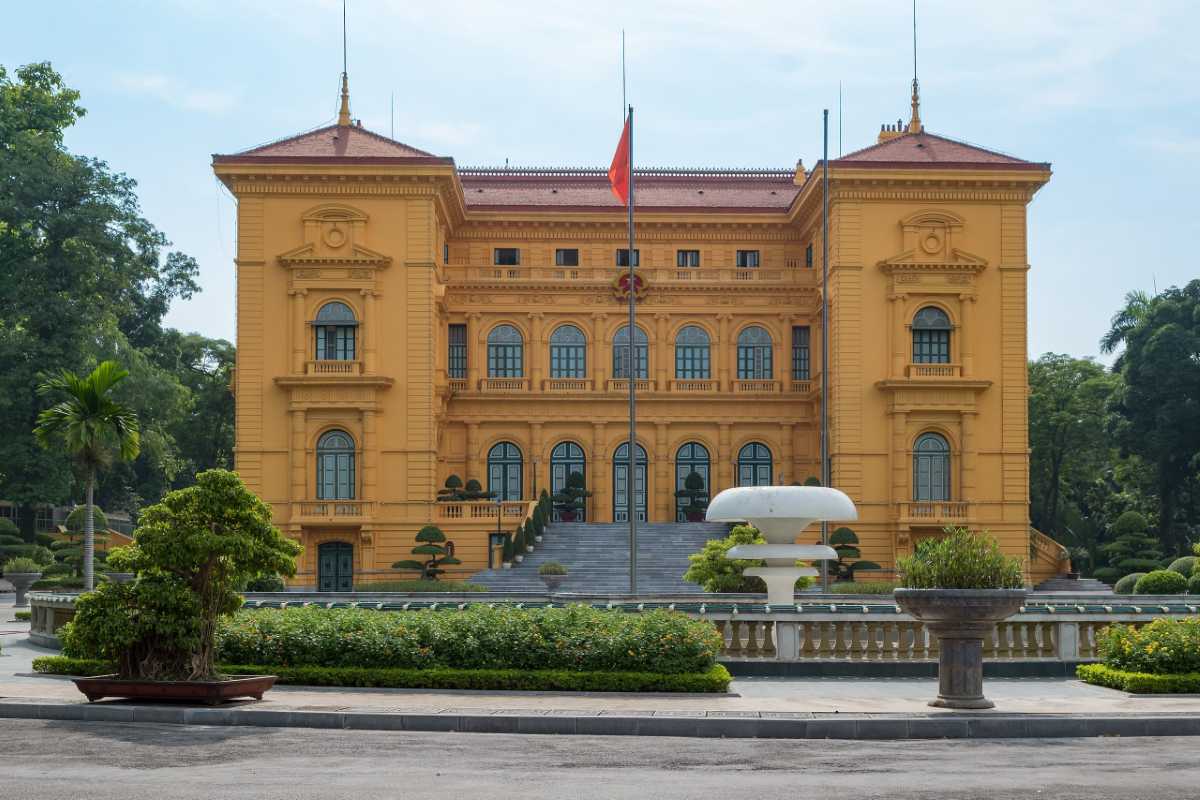
Preparing for Your Hanoi Presidential Palace Trip: Practicalities & Pro-Tips
Visiting the Hanoi Presidential Palace is an enriching experience that deserves some careful preparation. Knowing the best times to go, what to pack, and how to respect local customs can make your visit smoother and more enjoyable. This section provides practical advice on these essentials, helping you avoid crowds, stay comfortable in Hanoi’s climate, and interact respectfully with the local culture.
Plan your visit with these tips in mind to fully enjoy the serene beauty and historical richness of the palace grounds.
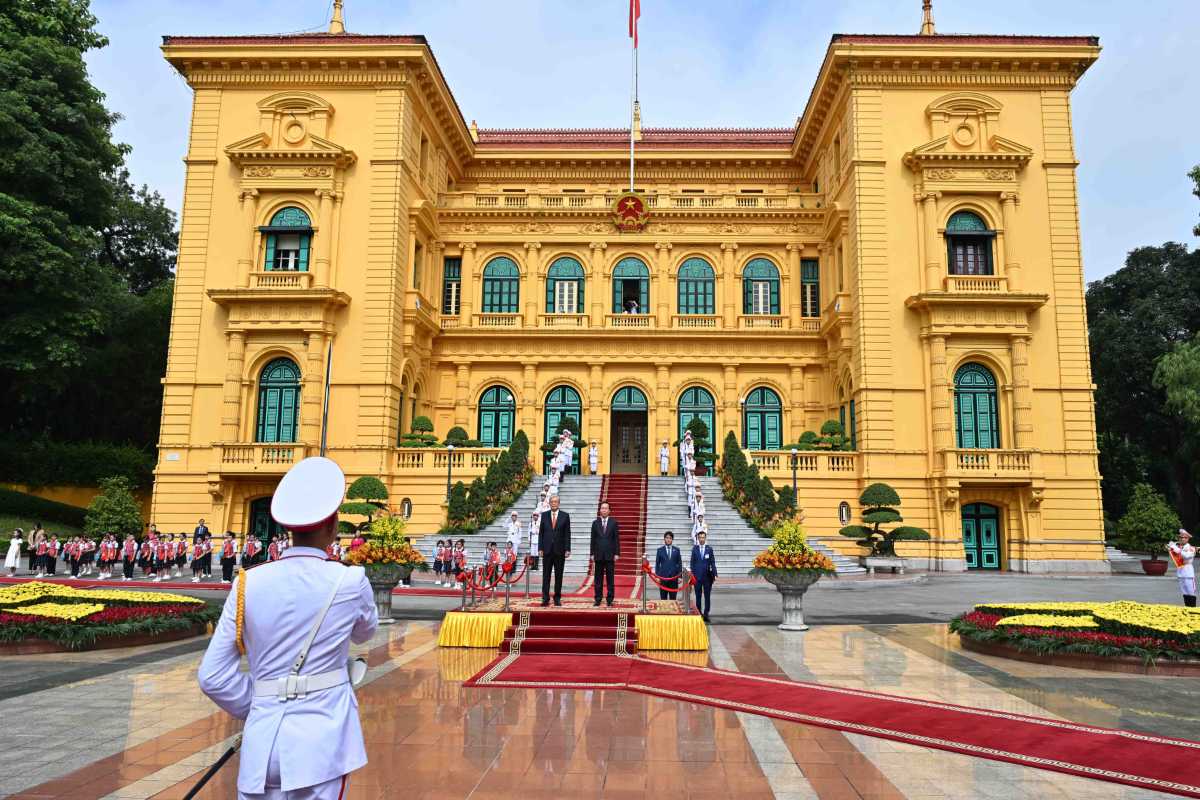
When to Visit: Best Times for Weather & Crowds
The best time to visit the Hanoi Presidential Palace is during the dry, cooler months from October to April. These months offer pleasant weather, ideal for exploring the gardens and outdoor spaces without the discomfort of intense heat or rain. Within the day, early mornings and late afternoons are perfect to avoid the midday sun and larger crowds that tend to gather around popular attractions. Weekdays are generally quieter, providing a more peaceful atmosphere for reflection.
- Dry Season Comfort: Cooler temperatures and less rain make for ideal outdoor sightseeing.
- Early Morning Visits: Arrive at opening to enjoy tranquility and soft natural light.
- Late Afternoon Advantage: Cooler temperatures and beautiful sunsets enhance the experience.
- Avoid Holidays: Major Vietnamese holidays attract more visitors and may limit access.
- Weekday Benefits: Less crowded and more relaxed ambiance compared to weekends.
Choosing the right time enhances both your comfort and the quality of your visit. Consider planning your trip around these recommendations for a memorable experience.
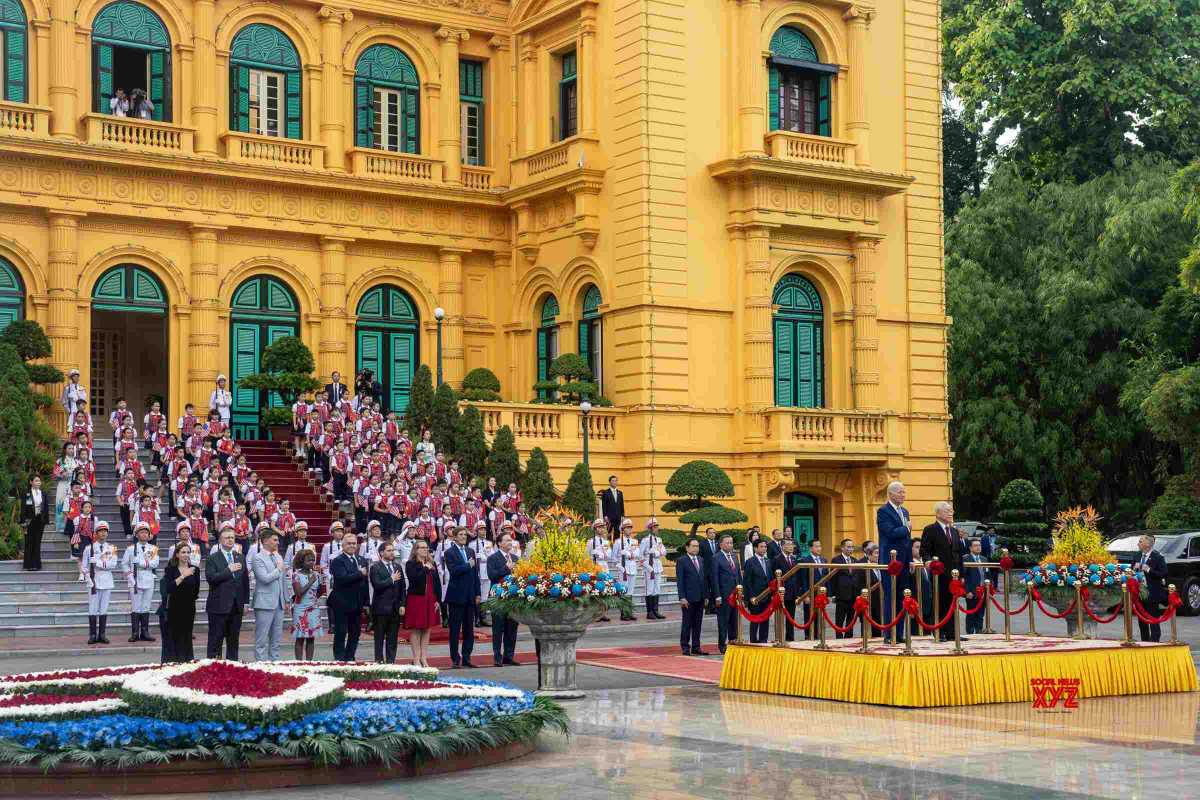
What to Pack and Wear
Packing smart is key when visiting the Hanoi Presidential Palace. Comfortable walking shoes are a must, as the grounds involve a fair amount of walking on varied terrain. Light, breathable clothing helps manage Hanoi’s humidity, but modesty is important—shoulders and knees should be covered out of respect for local customs. Don’t forget essentials like a hat, sunscreen, and water to stay hydrated under the sun.
- Comfortable Footwear: Opt for supportive shoes suitable for walking and uneven paths.
- Lightweight Fabrics: Breathable materials like linen or cotton help combat humidity.
- Respectful Attire: Cover shoulders and knees to honor cultural expectations.
- Sun Protection: Use hats, sunglasses, and sunscreen to protect from strong sun.
- Hydration: Carry a water bottle to stay refreshed during your visit.
With these packing tips, you can stay comfortable and show respect while enjoying your time at the palace. Prepare well and make the most of your visit.
Sarah's Guide to Smart Packing for Hanoi's Heat and Humidity
When I first planned my visit to the Hanoi Presidential Palace, nestled amidst its lush gardens, I admit I made a rookie mistake. I underestimated Hanoi’s truly sticky heat and its persistent humidity. Stepping out that morning, the air wrapped around me like a warm, damp blanket, and I quickly realized my oversight. For much of the day, I found myself feeling just… uncomfortable.
What truly became my saving grace, and what I now swear by for any trip to Hanoi, was embracing breathable linen clothing. Oh, the relief! It allowed my skin to breathe, creating a surprising little pocket of coolness against the warmth. Alongside that, quick-drying fabrics for sweat were absolute lifesavers. There were moments, especially while lingering by the serene pond near Ho Chi Minh’s Stilt House on the palace grounds, when a gentle breeze would pick up, and I could feel my quick-dry top already feeling fresher.
What I deeply wished I’d brought, and what I now tell everyone heading to Hanoi, was a wide-brimmed hat. The sun, even when dappled through the trees, has a surprising intensity, and I found myself squinting more than I’d like. And a refillable water bottle? Absolutely essential. Navigating the expansive grounds, admiring the architecture, and simply absorbing the peaceful atmosphere meant I was constantly reaching for hydration. Having my own bottle saved me from needing to find vendors and ensured I stayed comfortably hydrated throughout my exploration.
A particular concern for me, as a respectful traveler, was adhering to the palace’s dress code without feeling utterly overheated. Thankfully, I quickly found that loose, modest clothing worked perfectly. A flowy midi-skirt paired with a loose-fitting cotton blouse covered my shoulders and knees respectfully, yet the air could still circulate, preventing that dreadful clingy feeling. It was a revelation: respecting local traditions didn’t mean sacrificing my comfort in the tropical climate.
Packing smart for Hanoi isn’t just about what you toss into your suitcase; it’s truly about anticipating the weather and understanding local customs to stay cool, respectful, and fully present in the moment. These seemingly simple adjustments made an enormous difference, transforming what could have been a sweaty, slightly miserable experience into a genuinely pleasant and memorable visit to the Hanoi Presidential Palace.
Here's my smart-packing checklist for Hanoi:
- Breathable Linen & Cotton: These are your best friends in humid weather. They keep you cool and prevent that clammy feeling.
- Quick-Dry Clothes: Ideal for managing sweat and incredibly useful if you get caught in an unexpected tropical shower.
- Wide-Brimmed Hat: Non-negotiable for shielding your face and neck from the strong Vietnamese sun, especially during outdoor walks around the palace grounds.
- Refillable Water Bottle: An absolute must for staying hydrated throughout the day as you explore. Hanoi is warm, and you'll be thankful for constant access to water.
- Modest, Loose Clothing: Ensures you respect local traditions (especially important for sites like the Presidential Palace) while allowing for airflow to keep you from feeling overheated.
Take these tips to heart; your future self, comfortably exploring this beautiful historic site, will thank you!
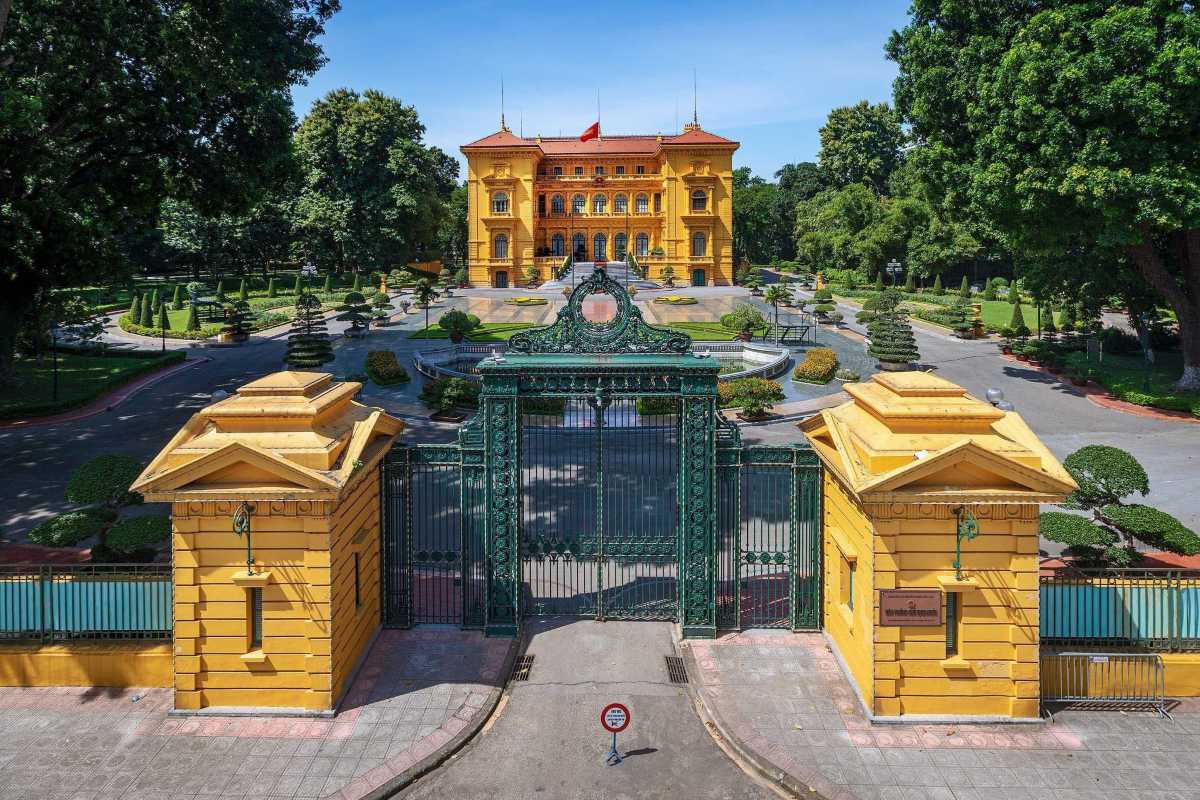
Navigating Language Barriers and Local Etiquette
When visiting the Hanoi Presidential Palace, knowing a few basic Vietnamese phrases can greatly enhance your experience and interactions. Simple words like "xin chào" (hello), "cảm ơn" (thank you), and "xin lỗi" (excuse me) show respect and open doors for friendly exchanges. Respectful behavior is also important—slight bows when greeting, avoiding touching anyone’s head, and speaking softly all help honor local customs. For a deeper understanding and smoother visit, consider hiring a knowledgeable guide who can bridge language gaps and explain cultural nuances.
- Useful Phrases: Learn simple greetings and polite expressions to communicate basic needs.
- Respectful Gestures: Bow slightly as a sign of respect; avoid physical contact with heads.
- Voice Tone: Speak calmly and politely to match local conversational style.
- Guide Benefits: Local guides provide language support and cultural insights enhancing your visit.
- Observing Customs: Follow local etiquette to show respect and avoid misunderstandings.
Using these tips ensures your visit is both respectful and enjoyable. Preparing with a few phrases and cultural insights makes a positive impression and enriches your connection to the palace and its people.
Liam's Lessons: Learning the Ropes of Hanoi's Local Customs
The morning sun, already warm despite the early hour, cast long, elegant shadows across the manicured lawns of the Hanoi Presidential Palace. I'd entered the serene grounds, a stark contrast to the city's bustling streets, feeling a sense of anticipation. This wasn't just a historical site; it was a place steeped in significance, and I wanted to approach it with the right reverence. My challenge, as it often is when traveling, was how to respectfully navigate the unspoken rules of such a place.
I walked along the shaded pathways, past Ho Chi Minh's modest stilt house, and towards the grand, yellow edifice of the Palace itself. Tourists, both local and international, moved about, some taking photos, others simply observing. I noticed a subtle difference in the way the Vietnamese visitors conducted themselves – a quieter demeanor, perhaps a slightly more deliberate pace. I was keen to blend in, to show that I wasn't just a sightseer, but someone who appreciated the cultural weight of the place.
It was when I approached the barrier separating visitors from the immediate vicinity of the main Palace building that a small moment of awkwardness arose. I had my phone out, ready to snap a wider shot of the impressive architecture. A security guard, his uniform crisp in the morning light, gently shook his head, offering a quiet, "No, no," with a hand gesture. My immediate thought was, "Oh, no photos of the building itself?" Then I noticed other Vietnamese visitors were indeed taking photos from further back, just not from this particular spot.
Instead of just turning away, I tried something. Remembering the advice I'd heard about showing respect, I offered a small, polite bow and a soft "Cảm ơn," (thank you) – a phrase I’d been practicing for just such an occasion. The guard, who had looked quite stern a moment before, visibly softened. He nodded, then with a slight smile, subtly pointed to a spot a few meters back, where taking photos was permitted. It was a silent exchange, a moment of mutual understanding that transcended language. That small gesture of respect on my part transformed a potential reprimand into a helpful pointer, and a shared, quiet smile. A genuine sense of connection washed over me; I wasn't just a tourist being corrected, but an individual trying to understand.
Later, as I was leaving the grounds, I stopped by a small refreshment stand. I'd bought a bottle of water, and as the vendor handed it to me, I instinctively reached out with one hand to take it, while fumbling for my wallet with the other. She paused, and I noticed her looking at my hands. Then, an older Vietnamese couple next to me gently nudged my elbow and, with a kind smile, motioned for me to use both hands to receive the bottle. It was a subtle, non-verbal cue – a common practice of politeness and respect in Vietnam, especially when receiving something from an elder or a vendor. I immediately corrected myself, offering a two-handed gesture and a heartfelt "Cảm ơn." The vendor's face lit up with a warm smile, acknowledging my effort to learn. It was a moment of slight cultural misunderstanding, easily resolved, that turned into a charming interaction.
My visit to the Presidential Palace taught me that genuine respect isn't always about grand gestures or perfect Vietnamese pronunciation. It's often found in the small, mindful actions – a polite bow, a two-handed gesture, a quiet "thank you" – that show you're paying attention and truly valuing the local customs. These little "lessons" transformed my experience, deepening my appreciation for Hanoi and its incredibly gracious people.
Practical Takeaways for Fellow Travelers Visiting Cultural Sites like the Presidential Palace:
- Observe and Adapt: Before acting, take a moment to observe how locals interact within the space. Notice their demeanor, how they engage with staff, and common gestures.
- Basic Phrases Go a Long Way: Even simple phrases like "Cảm ơn" (thank you) or "Xin chào" (hello) delivered with sincerity can open doors to warmer interactions and show genuine respect.
- Mind Your Hands: When receiving or giving something, especially to elders or in formal settings, use both hands as a sign of respect. This is a subtle but highly appreciated gesture.
- Respect Photography Rules: Pay attention to signs or guidance from staff regarding where photography is permitted. If unsure, err on the side of caution or politely ask. A simple head nod and "Cảm ơn" if you're corrected will show respect.
- Dress Modestly: For significant sites like the Presidential Palace, ensure your shoulders and knees are covered. This is a sign of respect for the historical and cultural importance of the location.
Embracing these simple customs won't just make you a more respectful traveler; they’ll enrich your journey, fostering genuine connections and memorable moments that go beyond the typical tourist experience.
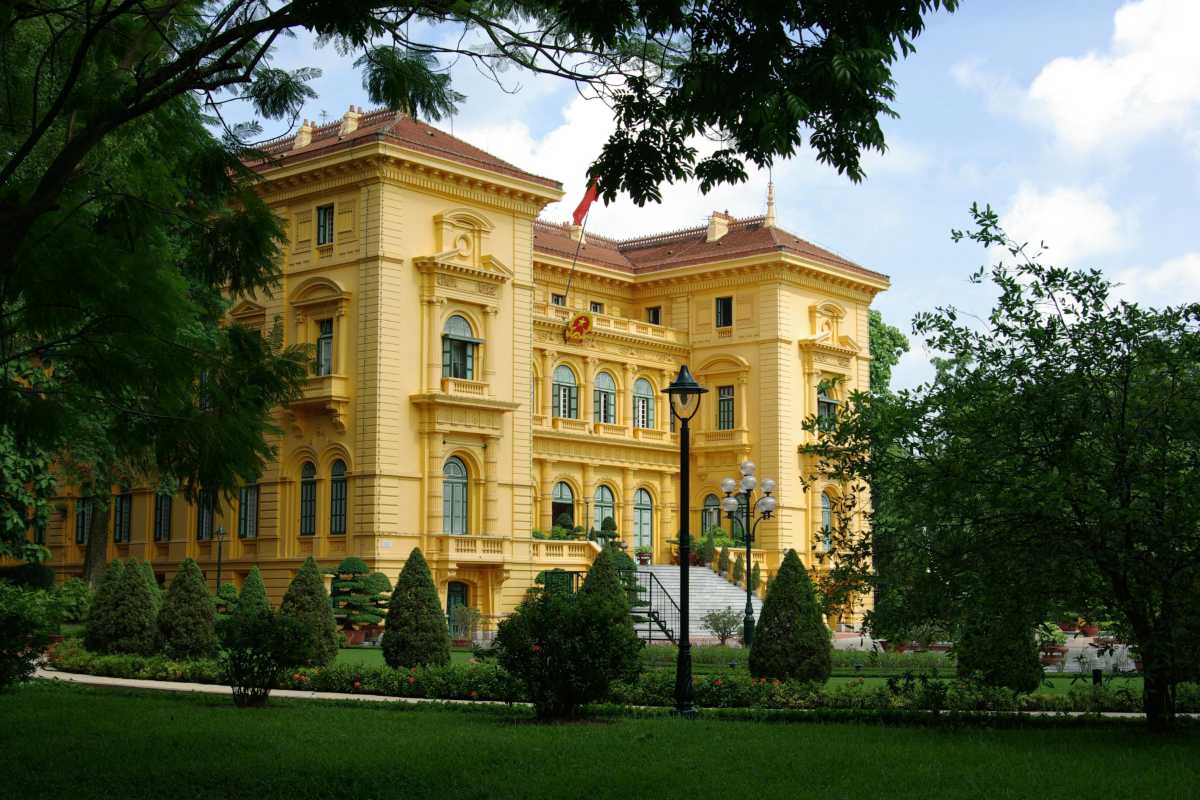
Planning Your Visit: What You Need to Know
Planning your trip to the Hanoi Presidential Palace is easier when you have all the right information at hand. This section covers everything from transportation options to ticket details, visitor guidelines, and nearby attractions. With these insights, you can organize a seamless visit and enjoy the full experience without surprises.
Preparing well ensures you arrive on time, avoid long waits, and make the most of your visit to this iconic historical site.
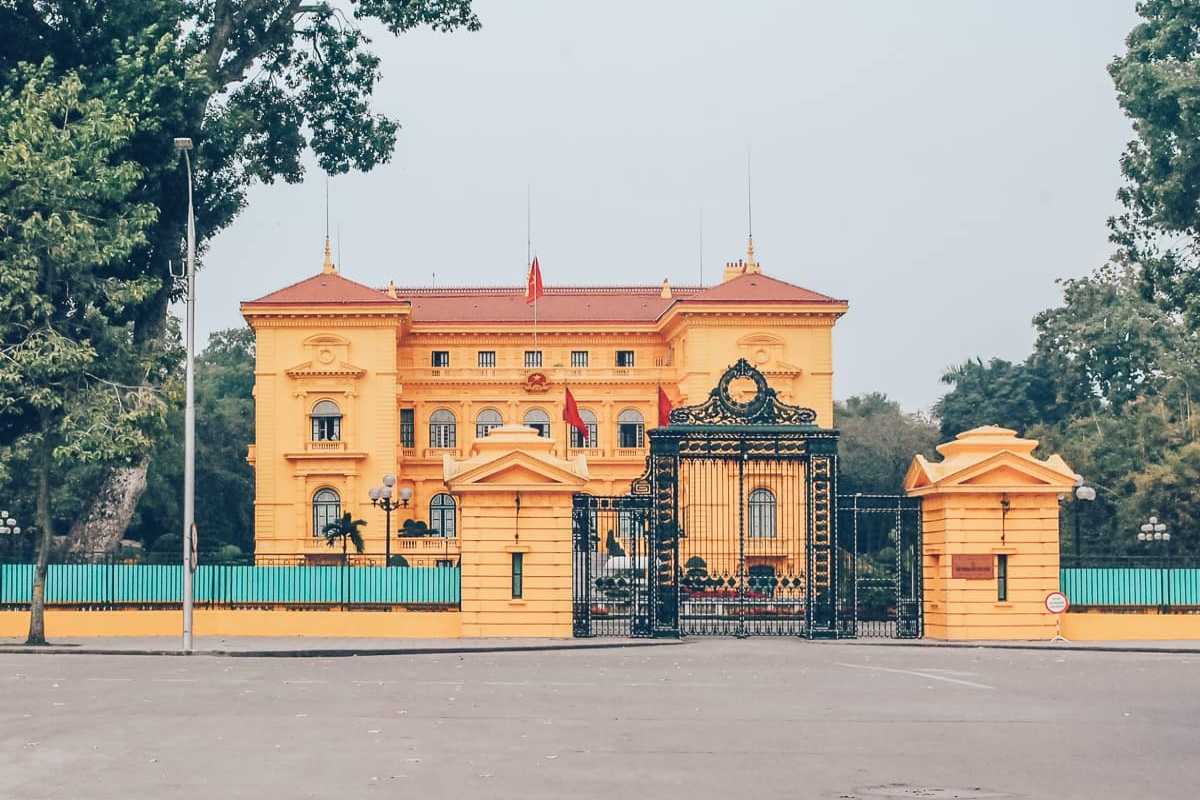
Location and How to Get There
Getting to the Hanoi Presidential Palace from central Hanoi is straightforward, whether you choose public transport, taxi, or a leisurely walk. Located in the Ba Dinh District, the palace is accessible via several bus routes and is within walking distance from popular spots like the Old Quarter.
- Bus Options: Routes 09, 22, and 32 connect the Old Quarter to Ba Dinh, with an average travel time of 15-25 minutes depending on traffic.
- Taxi or Ride-Hailing: Apps like Grab offer convenient rides; fares typically range from 30,000 to 50,000 VND from central Hanoi.
- Walking: A pleasant 20 to 30-minute walk from Hoan Kiem Lake allows you to soak in the city’s atmosphere en route.
Knowing your options helps you choose the best way to reach the palace based on your preferences, budget, and schedule.
Navigating Hanoi’s Ba Dinh District by public transport
Public buses are an affordable and reliable way to reach the Hanoi Presidential Palace. From the Old Quarter, consider these routes:
- Bus 09: Direct service from Hang Bai bus station to Ba Dinh, about 20 minutes.
- Bus 22: Passes through key points like Tran Hung Dao and heads toward Ba Dinh.
- Bus 32: A slightly longer route but useful during peak hours.
Travelers should prepare for typical Hanoi traffic and plan accordingly. Bus stops are well marked, and fare is around 7,000 VND. Carry small change and check schedules in advance.
Using public transport offers a glimpse into daily Hanoi life while getting you efficiently to your destination.
Taxi, cyclo rides, and walking routes from major landmarks
If you prefer more comfort or a unique experience, taxis and cyclos provide great alternatives.
- Taxis and Grab: Easily bookable through the Grab app, taxis provide quick and air-conditioned rides. Expect fares of 30,000 to 50,000 VND from the Old Quarter. Always choose official or app-based taxis for safety.
- Cyclo Rides: For a leisurely and authentic experience, try a cyclo ride through Hanoi’s streets. These pedal-powered rickshaws give a close-up view of city life and typically cost about 100,000 to 150,000 VND for short trips.
- Walking Routes: From Hoan Kiem Lake, a 20 to 30-minute walk takes you through vibrant neighborhoods and ends at Ba Dinh Square near the palace.
Selecting your mode of transport depends on your schedule, budget, and how much of Hanoi you want to explore en route.
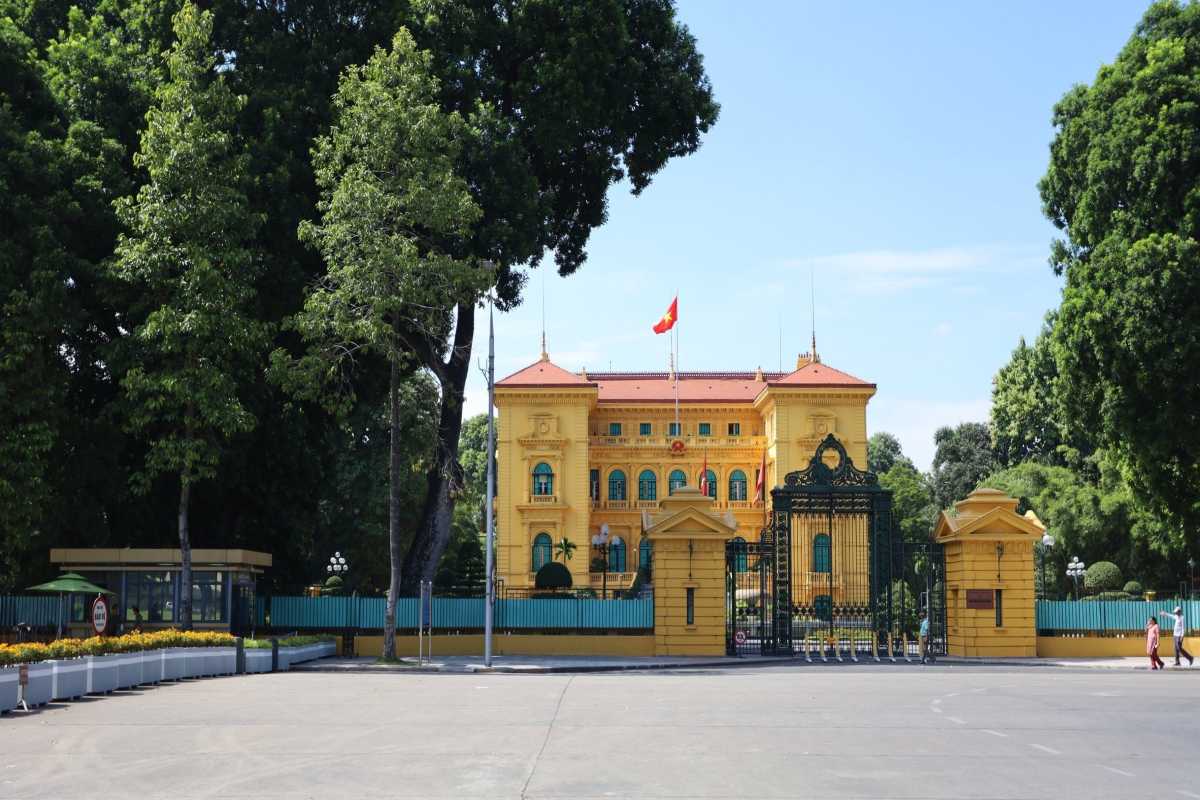
Entrance Fees, Tickets, and Opening Hours
Knowing the Hanoi Presidential Palace ticket prices and operating hours helps you plan your visit efficiently and budget accordingly. Tickets grant access to the palace grounds and gardens but do not include entry to Ho Chi Minh’s stilt house, which is viewed from outside. Bundled tickets are sometimes available that cover nearby attractions like the Ho Chi Minh Mausoleum and One Pillar Pagoda.
- Ticket Cost: Entrance to the palace grounds generally costs around 40,000 VND for adults.
- Bundled Tickets: Some packages include entry to the Ho Chi Minh Museum and One Pillar Pagoda for approximately 80,000 VND.
- Areas Included: The ticket allows access to the palace gardens, exterior of the palace, and surrounding grounds.
- Stilt House Access: Entry to Hồ Chí Minh’s stilt house is restricted; visitors view it from outside.
- Opening Hours: The palace is open daily from 8:00 AM to 11:00 AM and 2:00 PM to 4:00 PM, but always check for updates on public holidays.
Having this information upfront ensures you know what to expect and can manage your visit smoothly.
Current ticket prices and what they include
Understanding the specific costs and what your ticket covers will help you avoid surprises:
- Standard Ticket: Approximately 40,000 VND per person, granting access to the Hanoi Presidential Palace grounds.
- Combined Ticket: Around 80,000 VND, including access to the Ho Chi Minh Museum and One Pillar Pagoda.
- Ticket Coverage: Entry covers the gardens, exterior of the palace, and public areas around the grounds.
- Restricted Areas: Interiors of the palace and Hồ Chí Minh’s stilt house are off-limits to visitors.
- Purchase Points: Tickets are sold at the entrance or via authorized tour providers.
This transparent pricing and inclusion guide aids you in budgeting and deciding which areas to prioritize.
Best times of day and week to visit for a peaceful experience
To enjoy a tranquil visit and avoid the busiest times, consider these tips:
- Early Morning Visits: Arriving at opening time offers cooler temperatures and fewer visitors.
- Weekday Afternoons: Less crowded than weekends and more peaceful for exploring.
- Avoid National Holidays: Popular holidays attract large crowds and may limit access.
- Steer Clear of School Groups: Mid-morning on school days can be busy with organized tours.
- Seasonal Considerations: Dry season months from October to April generally see fewer crowds.
Planning your visit during off-peak times enhances your ability to appreciate the palace’s serene beauty and rich history.
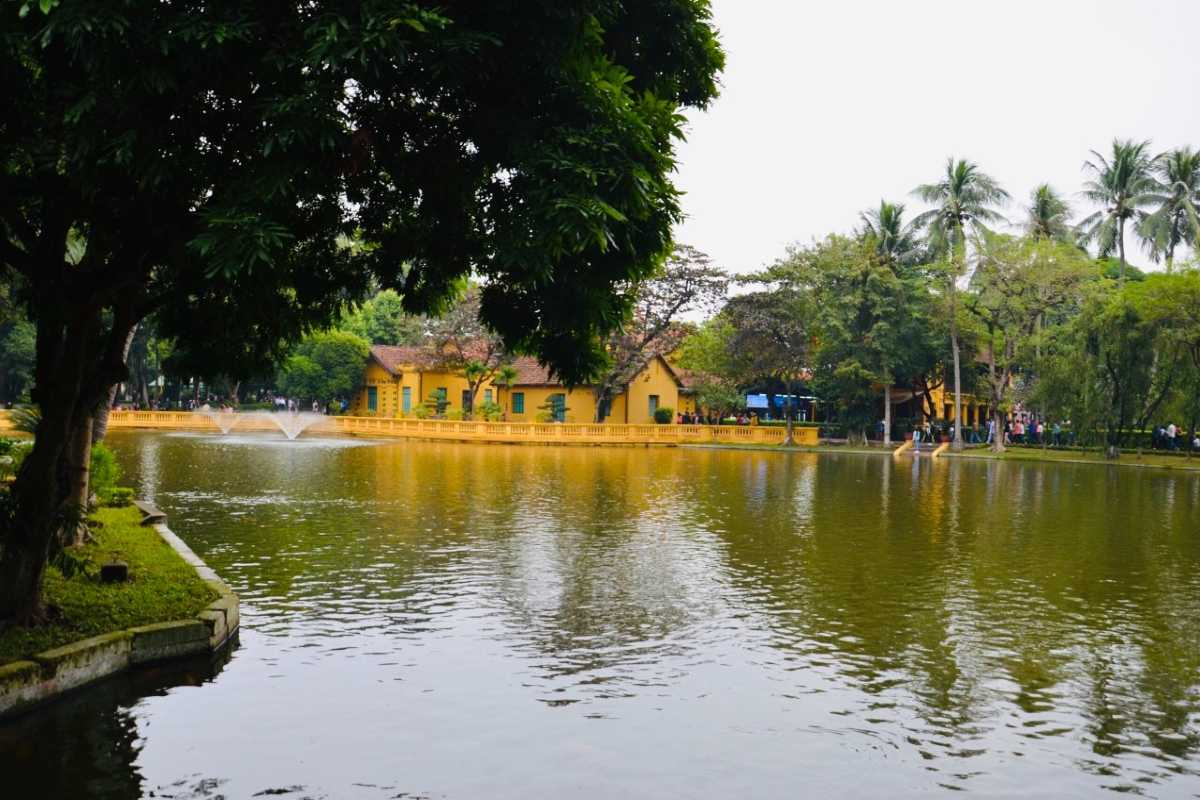
What to Expect During Your Visit
When visiting the Hanoi Presidential Palace, it’s important to know which areas you can explore and which are off-limits. Understanding these boundaries helps prevent disappointment and respects the preservation of this historic site.
Visitors are welcome to roam the beautifully maintained gardens and view the palace's exterior. However, entry inside the palace itself is restricted, as it is used for official state functions. Similarly, Hồ Chí Minh’s stilt house on the grounds is viewed only from outside to protect its heritage.
Planning your visit with clear expectations will help you enjoy the palace grounds fully while honoring its cultural significance.
Areas open to the public vs. restricted zones
Here’s a clear breakdown of visitor access:
- Public Areas: The palace gardens, grounds, and the exterior view of the palace are open to all visitors.
- Restricted Zones: Interior of the palace building and Hồ Chí Minh’s stilt house are closed to public entry.
- Preservation Purpose: Restricted areas are protected for state ceremonies and historical preservation.
- Visitor Impact: Staying within allowed zones ensures safety and maintains the site’s integrity.
Knowing these limits prepares you for a respectful and smooth visit to the Hanoi Presidential Palace.
Photography rules and visitor guidelines
To protect the site and ensure a pleasant experience for everyone, follow these photography and behavior rules:
- No Flash Photography: Flash is prohibited inside buildings and near sensitive artifacts.
- No Indoor Photos: Photography inside the palace and stilt house is not allowed.
- Quiet Conduct: Maintain a respectful silence, especially near memorials and sacred spots.
- Stay on Paths: Keep to designated walkways to protect gardens and historical features.
- Mobile Use: Use phones discreetly to avoid disturbing others.
Following these guidelines helps preserve the palace’s dignity and enhances your visit.
Nearby attractions to include in your itinerary
Make the most of your time by exploring these cultural landmarks close to the palace:
- Ho Chi Minh Mausoleum: The final resting place of Hồ Chí Minh, a key historical site.
- Ho Chi Minh Museum: Offers exhibits on Hồ Chí Minh’s life and Vietnam’s revolutionary history.
- One Pillar Pagoda: An iconic Buddhist temple with unique architecture nearby.
- Ba Dinh Square: The location of Vietnam’s Declaration of Independence.
Adding these sites creates a rich and meaningful day steeped in Vietnamese history and culture.
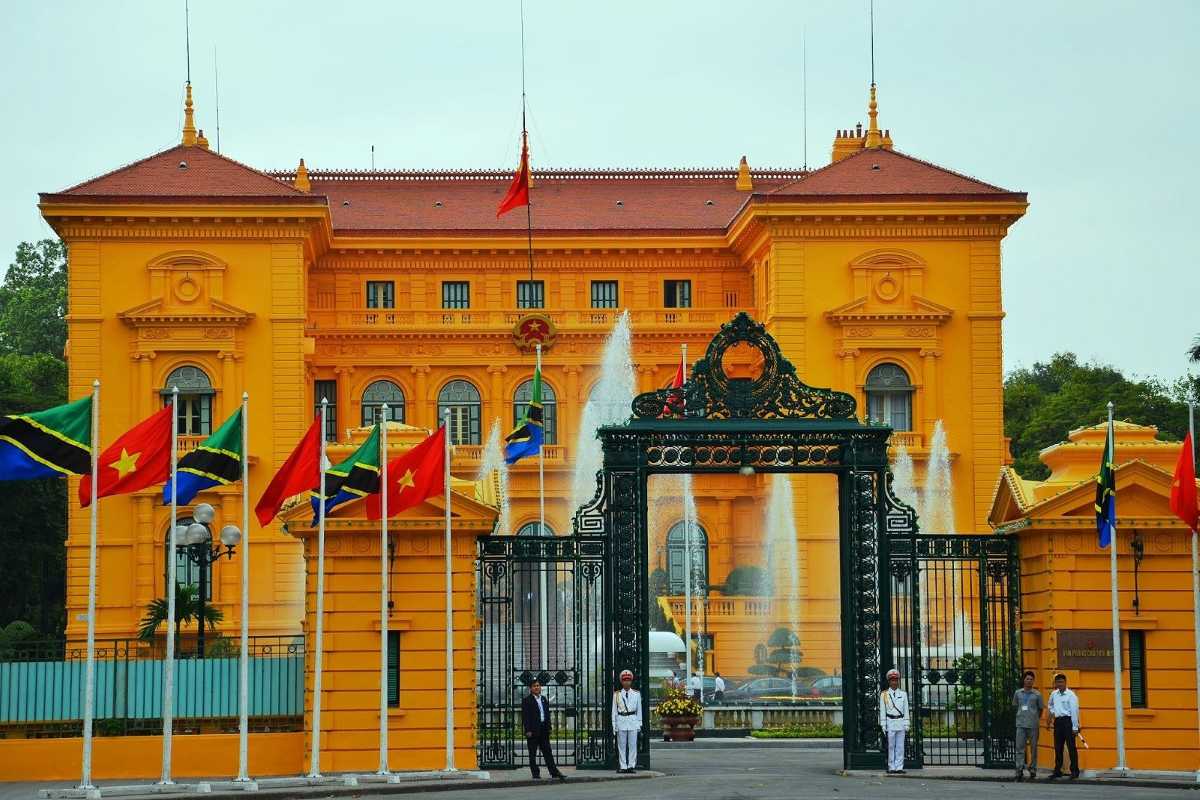
Common Questions & Troubleshooting
When visiting the Hanoi Presidential Palace, you may have practical questions. Here are answers to common concerns about facilities and accessibility to help you plan with confidence.
- Restrooms: Public restrooms are available near the entrance but may be limited, so plan accordingly.
- Food and Drink: Eating and drinking are not allowed inside the palace grounds to preserve the area’s cleanliness.
- Luggage Storage: There are no official storage facilities on-site, so carry only essentials.
- Accessibility: The grounds have paved paths suitable for wheelchairs and strollers, but some uneven surfaces may exist.
Having these details upfront can smooth your visit and avoid unexpected issues.
Managing Expectations: What Not to Expect
Olivia’s experience offers honest insight into what visitors often misunderstand about the Hanoi Presidential Palace.
Unlike grand European palaces open for tours, the palace building itself is not accessible to the public. The focus is on the beautifully kept gardens and viewing Hồ Chí Minh’s modest stilt house from the outside. This setting emphasizes simplicity and symbolism rather than opulence. Understanding this helps you appreciate the palace’s unique historical significance and avoid disappointment.
Being mentally prepared for a more understated visit ensures a richer, more meaningful experience.
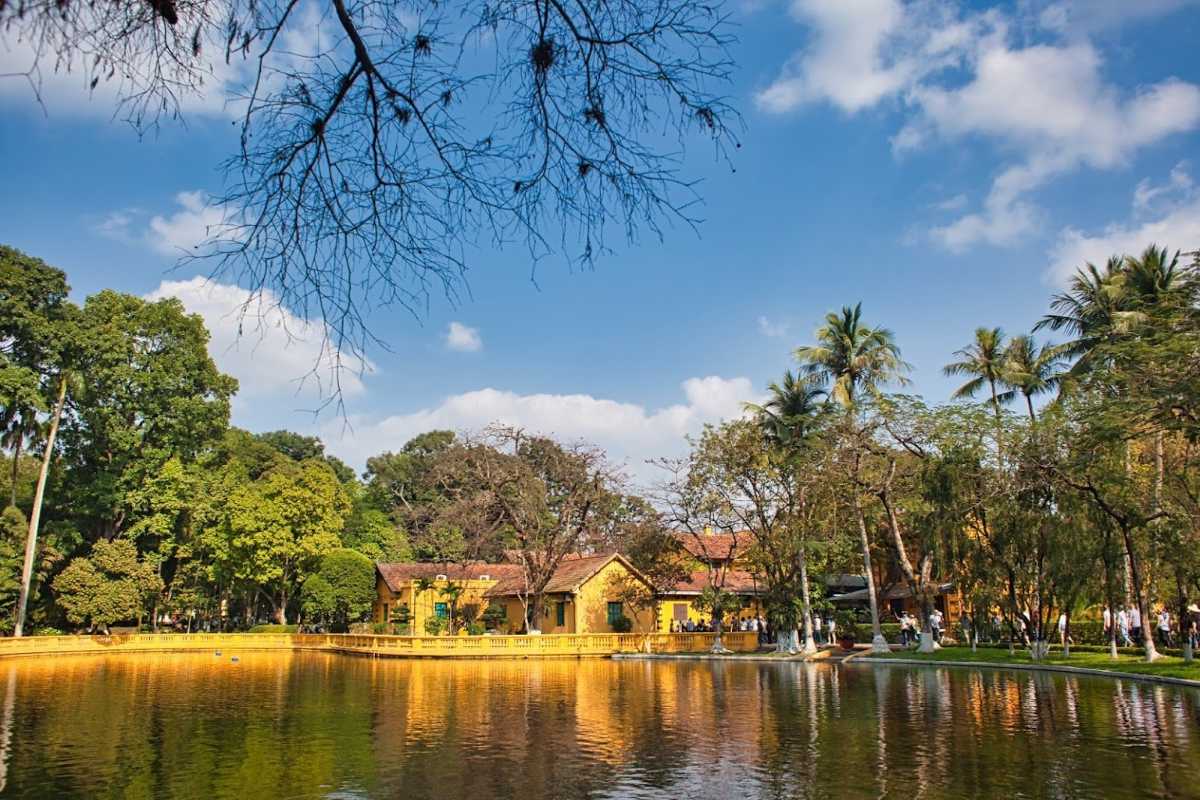
Making the Most of Your Time at Hanoi Presidential Palace
Visiting the Hanoi Presidential Palace offers you a chance to step back into Vietnam's rich history and culture. Whether you choose a guided tour or decide to explore on your own, this experience will immerse you in the elegance of French colonial architecture and the legacy of Hồ Chí Minh. Beyond the palace grounds, nearby cultural sites such as Ba Dinh Square and the One Pillar Pagoda provide further insight into Vietnam’s heritage. Planning your visit with a clear itinerary and knowing the best spots for photography will ensure you leave with lasting memories. Additionally, timing your trip to coincide with special events or festivals around the palace can add a unique cultural flavor to your day.
Take your time to soak in the serene gardens, admire intricate architectural details, and capture beautiful photos from the best vantage points. Whether you prefer the rich narratives of a knowledgeable guide or the freedom of self-exploration, there are options for every traveler to make their visit both meaningful and enjoyable. Plan ahead to include nearby attractions, and don’t miss the chance to witness Hanoi’s vibrant culture up close.
Make the most of your visit by considering guided tours or self-guided routes that fit your interests, and enjoy the historical and natural beauty of this iconic site.
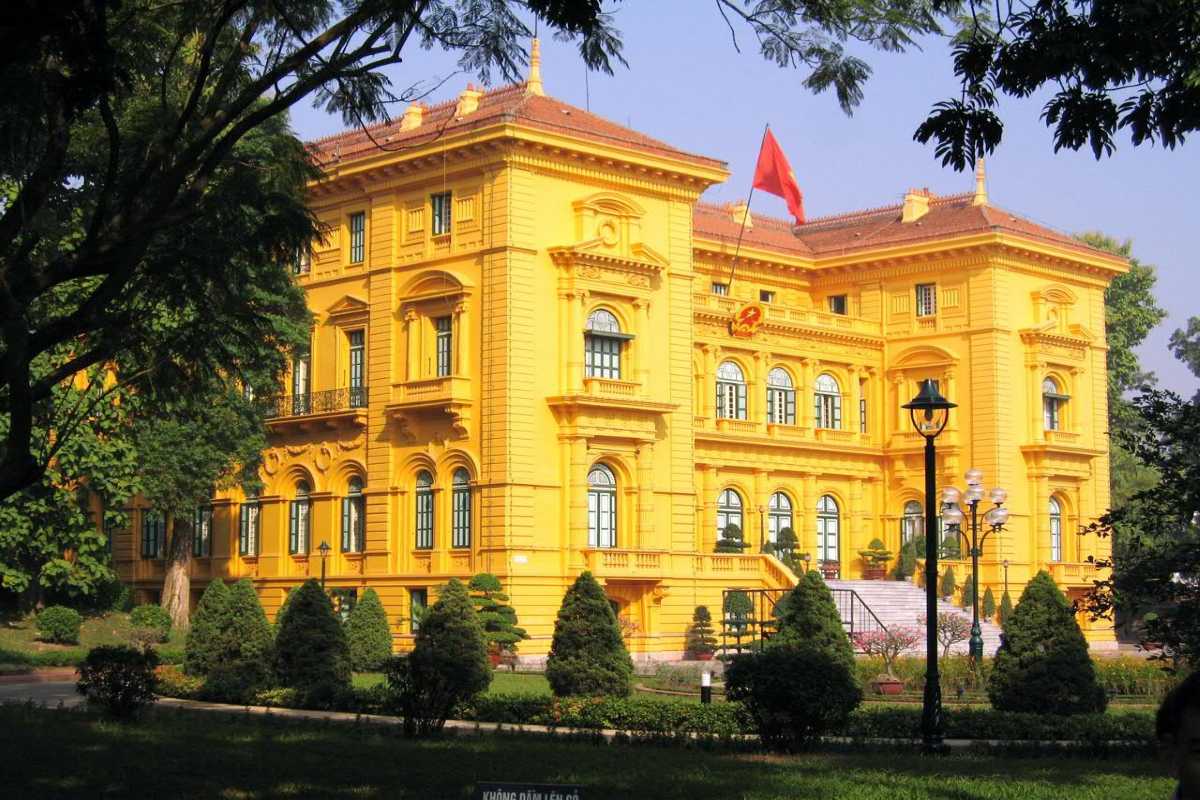
Guided Tours vs. Self-Guided Exploration
A guided tour of the Hanoi Presidential Palace is an excellent way to dive deep into the history and culture surrounding this landmark. Experienced guides provide fascinating stories about the palace’s construction, its role during the French colonial period, and Hồ Chí Minh’s life there. They navigate you efficiently through the grounds, ensuring you don’t miss key details or hidden gems. Official tours and reputable local companies often offer small group or private tours, enhancing the personal connection to the history.
On the other hand, if you prefer to explore at your own pace, a self-guided visit allows you to linger where you want, perhaps spending extra time in the gardens or photographing architectural features. Maps and mobile apps can assist with navigation and background information. Many travelers enjoy combining both methods—joining a guided tour first, then returning for quiet self-exploration.
Whatever your preference, both options promise a rich, engaging experience that highlights the palace’s significance and beauty.
Benefits of hiring a local guide for deeper insights
Hiring a local guide opens the door to a wealth of knowledge you might miss on your own. Guides at the Hanoi Presidential Palace share vivid anecdotes about Hồ Chí Minh’s life, the symbolism behind the stilt house, and the palace’s changing role through Vietnam’s turbulent history. Their expert commentary brings to life the architectural styles and explains the significance of various features in the gardens and buildings.
They also help you navigate the palace efficiently, making the most of your limited time. Many guides offer insights into nearby attractions, helping you plan a seamless cultural itinerary. Booking a knowledgeable guide ensures a fuller understanding and a more memorable visit.
Tips for exploring the gardens and nearby sites on your own
If you choose self-guided exploration, start at the palace’s main entrance and follow the paths through the lush gardens. Take your time to admire the well-preserved French colonial architecture framed by towering trees and colorful flowers. Don’t miss Hồ Chí Minh’s humble stilt house and the serene lotus pond nearby, perfect spots for reflection and photos.
After exploring the palace grounds, consider walking to nearby cultural sites like Ba Dinh Square, where Vietnam’s independence was declared, the striking One Pillar Pagoda, and the Ho Chi Minh Museum. This route provides a well-rounded glimpse of Hanoi’s historical heart. Allocate at least two to three hours for this itinerary to absorb the atmosphere without rushing.
Walking lets you set your own pace, pause for photos, and truly connect with the surroundings, making it a rewarding experience.
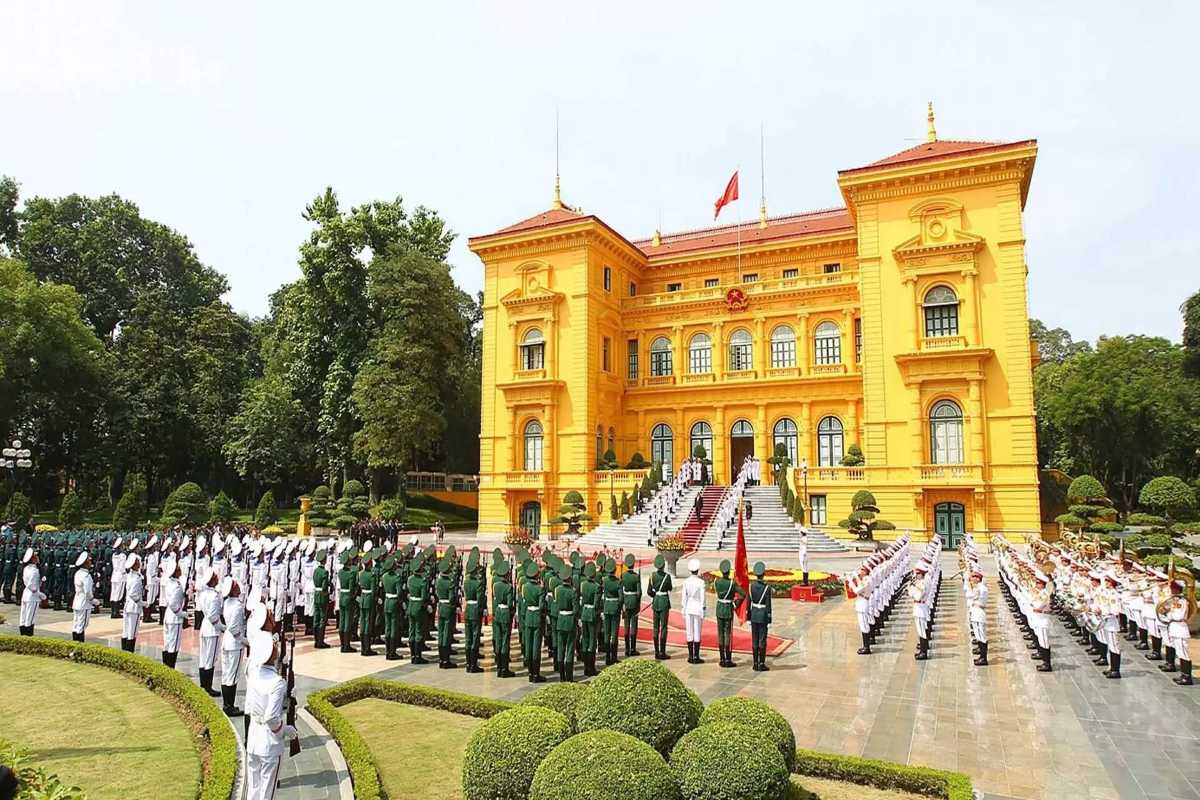
Experiencing the Surroundings: Museums and Cultural Spots
Visiting the Hồ Chí Minh’s Stilt House offers a unique glimpse into the simple life of Vietnam’s revered leader. This modest wooden home, built on stilts over a peaceful pond, reflects Hồ Chí Minh’s values of humility and dedication to the nation. Nearby, the Ho Chi Minh Museum provides a deeper understanding of his revolutionary career through rich exhibits that showcase artifacts, photographs, and documents chronicling Vietnam’s struggle for independence. Together, these sites add profound cultural depth to your visit, connecting you directly with Vietnam’s history and the man who shaped it.
Including these landmarks in your itinerary broadens your experience beyond the palace grounds and invites a deeper appreciation for the country’s journey to sovereignty. Don’t miss the chance to explore these culturally significant spots during your Hanoi visit.
Visiting Hồ Chí Minh’s Stilt House and Ho Chi Minh Museum
The Hồ Chí Minh’s Stilt House stands as a powerful symbol of simplicity and national spirit. Unlike the grand Hanoi Presidential Palace, this humble residence reflects Hồ Chí Minh’s personal choice to live modestly. The house contains his basic furnishings and personal belongings, offering an intimate look at his daily life and leadership style.
Next door, the Ho Chi Minh Museum presents detailed exhibits on his revolutionary efforts and Vietnam’s path to independence. The museum includes photographs, letters, and historical artifacts that bring to life the story of Vietnam’s fight for freedom. Together, these sites provide essential context for understanding the significance of the palace and Hồ Chí Minh’s legacy.
Visiting these sites enriches your journey through Hanoi’s historic heart and deepens your connection to Vietnam’s cultural heritage.
Exploring Ba Dinh Square and nearby heritage sites
Ba Dinh Square holds a pivotal place in Vietnam’s history as the location where Hồ Chí Minh declared the country’s independence in 1945. This vast, open space continues to be a site of national pride and major public events.
Nearby attractions include:
- One Pillar Pagoda: A striking Buddhist temple built on a single stone pillar, symbolizing purity and resilience.
- Ho Chi Minh Mausoleum: The solemn resting place of Vietnam’s founding father.
- Ho Chi Minh Museum: A comprehensive museum detailing his life and Vietnam’s revolution.
Including these landmarks in your visit offers a full picture of Hanoi’s cultural and political history, making your trip both educational and inspiring.
Plan your route wisely to experience these key sites, all within walking distance of the Hanoi Presidential Palace.
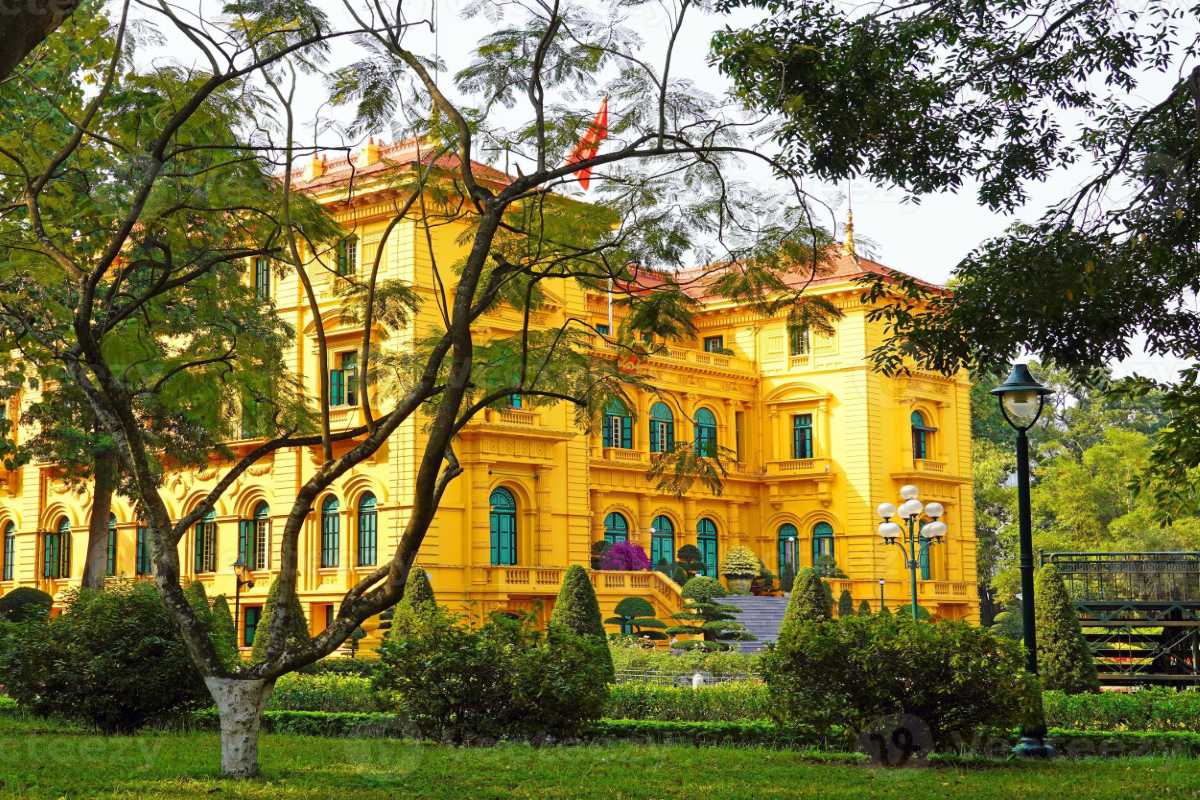
Beyond the Palace Walls: Recommended Itineraries
Planning your visit to the Hanoi Presidential Palace and its surroundings is easier with a clear itinerary. Here are three options tailored to different interests and time availability:
- Half-Day History Deep Dive (3-4 hours)
- Start with a visit to the Hanoi Presidential Palace grounds to appreciate the colonial architecture.
- Explore Hồ Chí Minh’s Stilt House and the adjacent Ho Chi Minh Museum for insight into Vietnam’s revolutionary history.
- Walk to Ba Dinh Square, where the declaration of independence was made, and admire the One Pillar Pagoda nearby.
- Full-Day Culture & Serenity (6-7 hours)
- Begin early at the palace to enjoy the peaceful gardens.
- Visit the stilt house and museum, spending ample time on exhibits.
- Continue to the Ho Chi Minh Mausoleum for a respectful visit.
- Stroll through Ba Dinh Square and end at the serene One Pillar Pagoda.
- Optional: Explore nearby traditional markets or cafes for local flavors.
- Flexible Half-Day for Architecture and Gardens (3 hours)
- Focus on the Hanoi Presidential Palace architecture and grounds.
- Take a self-guided walking tour around the palace gardens.
- Capture photographs at scenic spots before wrapping up.
Each itinerary is designed to help you make the most of your time, whether you prefer history, culture, or tranquility. Choose the plan that fits your pace and interests for a fulfilling experience.
Plan your visit carefully to fully enjoy the Hanoi Presidential Palace itineraries that best suit you.
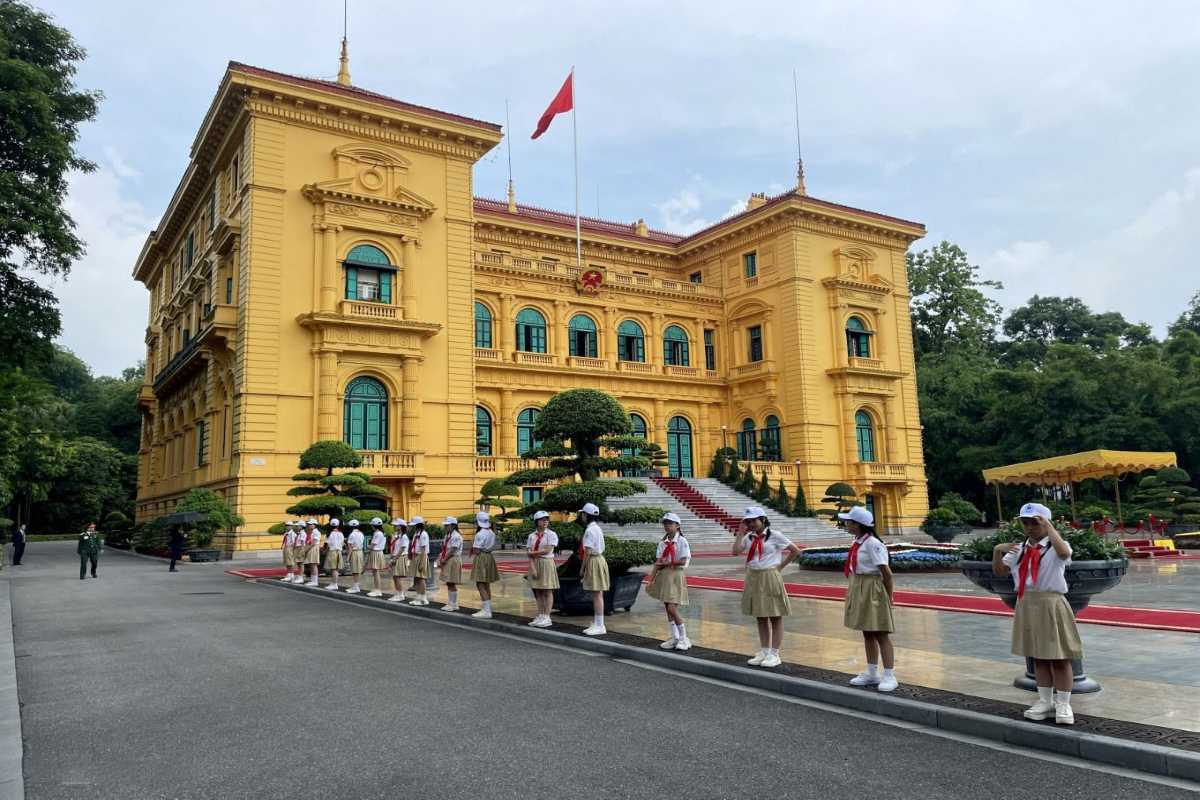
Capturing the Moment: Photography Tips
To capture stunning photos of the Hanoi Presidential Palace, consider the following tips that highlight its beauty and atmosphere:
- Visit early morning or late afternoon to take advantage of soft, natural light.
- Focus on unique angles like the palace’s grand façade, the tranquil lotus pond, and the delicate details of the stilt house.
- Use the gardens’ pathways and surrounding greenery to frame your shots, enhancing the peaceful vibe.
- Avoid crowds by choosing off-peak times for clearer, uninterrupted photos.
These simple techniques help you create lasting memories and showcase the palace’s charm through your lens. Don’t forget to bring your camera or smartphone fully charged!
Enhance your visit with these expert Hanoi Presidential Palace photography tips and capture the site’s timeless elegance.
Best Spots for Iconic Photos
When exploring the Hanoi Presidential Palace, these locations offer some of the most picturesque photo opportunities:
- Front of the Palace: Capture the stately architecture and grand entrance.
- Lotus Pond: Use the serene water and blooming lotus flowers for tranquil nature shots.
- Near Hồ Chí Minh’s Stilt House: Frame the simple wooden structure amid lush greenery.
- Palace Gardens: Find hidden nooks with colorful flowers and sculpted trees.
- Pathways and Gates: Photograph ornate gates and pathways that reflect colonial design.
Visiting these spots will help you take iconic images that reflect the palace’s historical and natural beauty. Use these recommendations to enrich your photo collection.
Discover these prime Hanoi Presidential Palace photo spots for unforgettable photography moments.
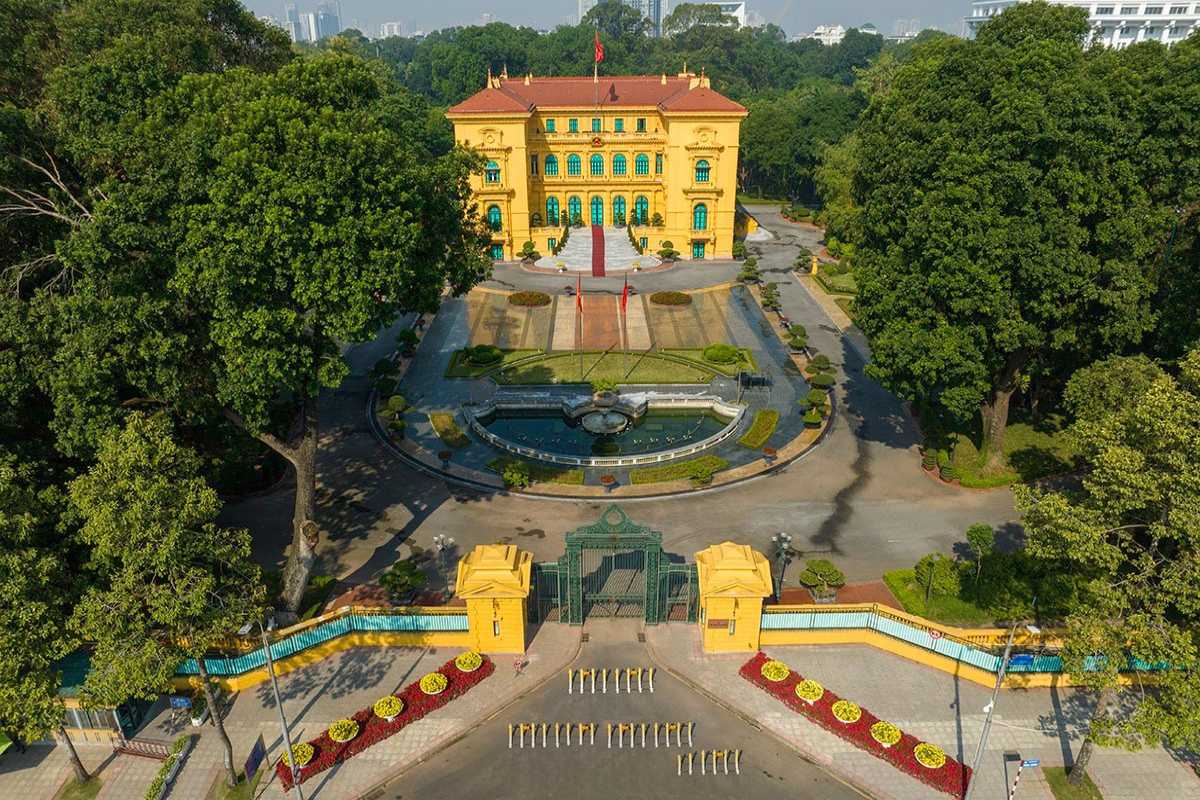
Seasonal Tips and Special Events
Visiting the Hanoi Presidential Palace during major Vietnamese holidays offers a unique experience but also requires some planning. Key celebrations include the Lunar New Year (Tet), National Day (September 2nd), and Mid-Autumn Festival. These holidays can affect opening hours, lead to larger crowds, or create vibrant festive atmospheres around the palace grounds.
Understanding these seasonal variations helps you decide whether to join in the celebrations or visit during quieter periods. Adjust your plans to enjoy either the rich cultural events or a peaceful exploration of the site.
Use these Hanoi Presidential Palace seasonal tips to plan your visit with confidence and make the most of your experience.
When national holidays affect access or add cultural flavor
Major Vietnamese holidays influence visiting conditions at the Hanoi Presidential Palace as follows:
- Lunar New Year (Tet): The palace may close for a few days; nearby streets come alive with traditional markets and decorations.
- National Day (September 2nd): Ceremonial events occur in the Ba Dinh area, leading to restricted access but offering a glimpse of patriotic celebrations.
- Mid-Autumn Festival: Cultural performances and lantern displays can create a festive atmosphere near the palace.
- Other public holidays: May see increased visitor numbers and limited services.
Being aware of these changes lets you plan either to immerse yourself in the festivities or avoid potential disruptions during your visit.
Adjust your travel dates with these Hanoi Presidential Palace national holidays in mind to enjoy the atmosphere or maintain a calm visit.
How to enjoy festivals or commemorations nearby
When visiting during special events near the Hanoi Presidential Palace, consider these ways to deepen your cultural experience:
- Attend public ceremonies or flag-raising events at Ba Dinh Square for an authentic glimpse of national pride.
- Explore traditional performances and folk art exhibitions often held nearby during festivals.
- Visit local markets and food stalls around the palace grounds to taste seasonal specialties.
- Participate respectfully by observing customs and joining in community celebrations when appropriate.
These activities provide rich insights into Vietnamese heritage and make your visit more memorable.
Enhance your trip by aligning it with Hanoi Presidential Palace festivals and Ba Dinh cultural events for a truly immersive experience.

Insider Tips and Traveler Advice
Visiting the Hanoi Presidential Palace can be a smooth and memorable experience when you know the right insider tips. This section shares practical advice on how to avoid crowds, navigate accessibility challenges, enjoy family-friendly facilities, and savor authentic local dining near the palace. These insights help you feel confident and comfortable while exploring this historic site and its vibrant surroundings.
Plan your visit smartly with these Hanoi Presidential Palace visitor tips to make the most of your time and immerse yourself in local culture naturally.

How to Avoid Crowds and Enjoy a Relaxing Visit
To truly appreciate the tranquil beauty and historical significance of the Hanoi Presidential Palace, timing your visit is key. Visiting right at opening time or during weekday afternoons offers a more peaceful experience with fewer tourists around. Avoid weekends and public holidays when the palace can get quite busy.
By choosing off-peak hours, you can explore the gardens, stilt house, and surrounding areas at your own pace, capturing serene moments away from crowds.
Use these Hanoi Presidential Palace visitor tips to enjoy a calm and enriching visit.
Early morning visits and weekday recommendations
Maximize your chance for a peaceful visit by:
- Arriving right when the palace opens to experience quiet grounds.
- Scheduling your trip on a weekday, ideally in the early afternoon.
- Avoiding public holidays and weekends when visitor numbers peak.
- Planning extra time to wander undisturbed and take photographs.
Following these simple timing strategies helps you soak in the palace’s atmosphere without the bustle.
Weather considerations and dress code tips
Stay comfortable and respectful by keeping these points in mind:
- Bring water and stay hydrated, especially during Hanoi’s warm, humid months.
- Wear breathable, light clothing suitable for walking and the tropical climate.
- Dress modestly with shoulders and knees covered to respect cultural norms.
- Use sun protection like hats, sunglasses, and sunscreen.
- Wear comfortable shoes for exploring the palace grounds and nearby streets.
Preparing for the weather and cultural expectations ensures your visit is pleasant and respectful.

Accessibility and Family-Friendly Tips
Visiting the Hanoi Presidential Palace is enjoyable for everyone, including families and visitors with mobility needs. This section offers helpful advice on accessible paths, facilities, and ways to keep children engaged during the visit. With these tips, you can confidently plan a comfortable and rewarding experience for all.
Use these Hanoi Presidential Palace accessibility tips to ensure a smooth visit tailored to your family or mobility requirements.
Navigating the site with children or limited mobility
Exploring the palace grounds is manageable for visitors with different needs. Here are some practical tips:
- Paths around the gardens are mostly flat and well-maintained, suitable for wheelchairs and strollers.
- Ramps and accessible entrances are available at key points, but some areas may have steps or uneven surfaces.
- Children often enjoy the peaceful gardens and the charming fish pond near Hồ Chí Minh’s Stilt House, which provides a fun and relaxing spot.
- Plan your route to include shaded resting areas and benches for breaks.
- Consider a slower pace to accommodate everyone’s comfort and engagement.
These suggestions help you navigate comfortably while making the visit enjoyable for all family members.
Facilities available for visitors
To enhance your visit comfort, the Hanoi Presidential Palace offers several amenities:
- Clean restrooms located near main entrances.
- Benches scattered throughout the gardens and visitor areas.
- Information counters staffed with helpful personnel.
- Designated accessible parking nearby.
- Signage in multiple languages to guide visitors.
Knowing about these facilities beforehand helps you prepare for a hassle-free visit and makes your time at the palace more pleasant.

Local Eats and Refreshments Near the Palace
Exploring the Hanoi Presidential Palace isn’t just about history; it’s also an opportunity to savor authentic Vietnamese flavors. The area around the palace is rich with local eateries and cafes offering genuine culinary experiences away from typical tourist traps. Whether you crave street food or a cozy cafe, you’ll find plenty of delicious options nearby. Discover the best street food near Hanoi Presidential Palace to complement your cultural visit.
Enjoy a meal that brings the tastes of Hanoi alive right after your palace tour.
Recommended cafes and street food spots within walking distance
For a truly local dining experience near the palace, try these spots:
- Pho Thin: Famous for its flavorful, slightly smoky pho, just a short walk from the palace.
- Cafe Giang: Known for its unique egg coffee, a creamy and rich Hanoi specialty.
- Bun Cha Huong Lien: Popular for grilled pork with noodles, a beloved Hanoi dish.
- Banh Mi 25: Offers some of the best Vietnamese sandwiches with fresh ingredients.
- Xoi Yen: A local favorite for sticky rice with savory toppings.
These eateries offer authentic tastes and are easy to reach on foot, making them perfect for a quick bite or relaxed meal.
What to try for a true taste of Hanoi
When dining near the Hanoi Presidential Palace, these dishes and drinks are must-tries:
- Pho: The iconic Vietnamese noodle soup, rich in herbs and broth.
- Bun Cha: Grilled pork served with noodles and fresh herbs, a Hanoi specialty.
- Egg Coffee: A creamy, sweet coffee with a frothy egg yolk topping.
- Banh Mi: A crispy baguette filled with savory meats and vegetables.
- Cha Ca: Grilled fish with turmeric and dill, offering a unique flavor profile.
Sampling these dishes lets you experience Hanoi’s culinary heritage firsthand, adding delicious memories to your trip.
Minh's Top Picks: Post-Palace Pho Joints You Can't Miss
After a morning spent immersed in the history and serene grandeur of the Hanoi Presidential Palace, my mind buzzing with stories of Ho Chi Minh, a different kind of hunger began to stir. Not just for sustenance, but for something deeply, authentically Hanoian. There’s only one answer after a significant cultural exploration in this city: a perfect bowl of pho. The challenge, of course, is that Hanoi is the pho capital, and every street corner seems to beckon with its own simmering broth. I craved that moment of finding the bowl – the one that perfectly capped off the experience.
My strategy was simple: exit the Presidential Palace grounds and let my nose, and a little local intel, guide me. I knew I wanted something relatively close, something that felt like a reward for all that thoughtful exploration. After a pleasant 10-15 minute walk from the Palace's main gates, heading south-east towards the Old Quarter, I found myself on the bustling Ly Quoc Su street. This area is famous for pho, and I had a particular place in mind.
My first absolute top pick, a place that delivers pure post-palace satisfaction, is Phở 10 Lý Quốc Sư (Address: 10 Lý Quốc Sư, Hoàn Kiếm District). It's incredibly well-known, and for good reason. I arrived around lunchtime, and yes, there was a line, but don't let that deter you – it moves surprisingly fast, a testament to their efficiency. The air was thick with the scent of star anise and simmering beef bones, a promise of what was to come.
What makes their pho special? It's the broth. Oh, that broth! It's clear yet incredibly rich, with a depth of flavor that speaks of hours, maybe even days, of meticulous simmering. It has that perfect balance of savory beefiness without being overly fatty. I opted for the phở tái nạm – thinly sliced rare beef that cooks gently in the hot broth, alongside tender, well-done flank. The beef was incredibly fresh and tender, practically melting in my mouth. They offer a range of condiments – fresh chilies, lime wedges, garlic vinegar – but honestly, I barely touched them. The broth itself was a masterpiece, a comforting hug in a bowl, precisely what I needed after the morning's walk. The satisfaction of that first spoonful, the warmth spreading through me, was immense. It was the perfect counterpoint to the more formal atmosphere of the Palace, grounding me firmly back in the vibrant, delicious reality of Hanoi.
My second pick, a slightly more "hidden gem" I stumbled upon on a different day but equally close to the Palace (about a 15-20 minute walk, slightly north-east), is Phở Gia Truyền Bát Đàn (Address: 49 Bát Đàn, Hoàn Kiếm District). This spot feels like stepping back in time. It’s famous for its "standing pho" tradition – a testament to its popularity, though there are stools available if you arrive at the right time.
What sets Phở Gia Truyền apart is its traditional, no-frills approach and incredibly aromatic broth. It feels less refined than Phở 10, in a wonderfully authentic way. The broth here is intensely beefy, perhaps a touch richer, with a beautiful golden hue. They keep their menu simple: usually just phở tái (rare beef) or phở chín (well-done beef). The noodles are wonderfully springy, and the slices of beef are generous. This place offers a more robust, almost rustic pho experience. Finding it down a bustling street, slipping into a spot on one of the low stools, and slurping down that intensely flavorful broth felt like cracking a secret code to Hanoi's culinary soul. The sensory experience – the steam rising, the clatter of bowls, the murmured conversations – was just as satisfying as the taste.
For any traveler leaving the Hanoi Presidential Palace, perhaps a little tired but culturally enriched, these two pho joints offer the perfect next stop. They aren't just places to eat; they're continuations of your Hanoi journey, providing a truly authentic taste of the city’s heart and soul. Finding that perfect bowl after a morning of exploration isn't just about satisfying hunger; it's about completing a full circle of immersion, from history to culinary delight. You simply can't miss them.

Why You’ll Love Exploring Hanoi Presidential Palace
The Hanoi Presidential Palace is a unique destination where history, architecture, and culture come together to tell a compelling story of Vietnam’s past. Visitors are drawn not only to its stunning colonial design but also to the layers of national identity that resonate through its walls and gardens. The palace’s tranquil setting offers a peaceful escape amid the city's hustle, while personal stories and cultural richness create a memorable and meaningful experience. Whether you are a history enthusiast, an architecture lover, or someone seeking quiet reflection, the palace has something special to offer. Embrace the blend of tradition and beauty as you explore this iconic landmark and uncover its many charms.
Plan your visit today to experience the lasting appeal of the Hanoi Presidential Palace.

The Unique Blend of History, Architecture, and Culture
The Hanoi Presidential Palace presents a captivating journey through Vietnam’s layered history. Its French colonial architecture showcases a blend of European elegance and local influence, standing as a testament to the country’s complex past. At the same time, the palace embodies Vietnam’s national identity, reflecting the struggles and triumphs of its people. As you explore, you’ll witness how colonial heritage intertwines with cultural pride, offering visitors a rich, multifaceted experience that goes beyond mere sightseeing.
Discover the depth of Vietnam’s heritage through the architectural beauty and cultural significance of the Hanoi Presidential Palace.

The Peaceful Gardens Amidst Bustling Hanoi
Amid the energetic streets of Hanoi lies a serene oasis within the palace grounds. The Hanoi Presidential Palace gardens provide a quiet retreat where visitors can pause and reflect. Lush greenery, gentle pathways, and the soft rustle of leaves create a calming atmosphere that contrasts sharply with the city’s vibrant pace. These gardens offer a chance to connect with nature, history, and yourself, making your visit not only educational but also rejuvenating.
Take a moment to unwind and enjoy the tranquil beauty of the Hanoi Presidential Palace gardens during your visit.
Chloe's Serene Discoveries: Finding Peace in the Palace Gardens' Nooks
The Hanoi Presidential Palace. The name itself conjures images of grandeur, history, and officialdom. And indeed, as I first approached its stately yellow facade, the weight of its past was palpable. But it wasn't the imposing architecture that captivated my heart; it was the unexpected, profound serenity I found within its sprawling, emerald green gardens. After navigating the city's exhilarating, yet often overwhelming, symphony of motorbikes and street vendors, these grounds offered a silent, fragrant balm for the senses.
I remember stepping through the main gate, and the immediate shift in atmosphere was almost startling. The urban hum faded, replaced by the gentle rustle of leaves and the distant, melodic chirping of unseen birds. The air, though still warm with Hanoi’s characteristic humidity, felt cleaner, carrying the faint, sweet scent of frangipani blossoms – a fragrance that now, for me, is inextricably linked with that feeling of instant calm.
My intention was to follow the well-trodden paths to Ho Chi Minh’s Stilt House, but a winding, less-traveled side path beckoned, disappearing into a dense thicket of bamboo. Curiosity, and a desperate craving for a moment of quietude, pulled me in. As I ventured deeper, the bamboo stalks formed a whispering tunnel, their leaves clattering softly in the breeze like nature's own wind chimes. The light dappled through the canopy, creating a moving mosaic of sun and shadow on the path. It was in this secluded nook, tucked away from the main thoroughfare, that I truly found my unexpected oasis.
I spotted a simple wooden bench tucked beneath a particularly ancient-looking banyan tree, its aerial roots cascading like a thousand verdant curtains. I sank onto it, feeling the rough texture of the wood beneath my fingertips, and just breathed. The sounds of the city were completely muffled here, replaced by the buzzing of unseen insects and the soft gurgle of a nearby, hidden stream. I closed my eyes, inhaling deeply, trying to identify the various floral notes in the air – definitely frangipani, perhaps some jasmine, and something else, earthy and rich, like damp soil.
Opening my eyes, I noticed a unique plant I hadn't seen before, its broad, waxy leaves glistening with dew, unfurling in a spiral. It was a small detail, but in that moment of stillness, it felt incredibly significant, a testament to the quiet, persistent beauty of nature thriving within this historical space. My mind, which had been buzzing with travel plans and observations, slowly unwound. It was a profound sense of tranquility, a deep, almost spiritual connection to the earth and the present moment. The historical significance of the Palace faded into the background, replaced by the simple, powerful act of being.
This wasn't just a garden; it was a sanctuary, a living, breathing testament to peace. It offered a quiet counterpoint to the vibrant energy of Hanoi, a place where one could pause, reflect, and simply feel. For me, discovering these serene nooks within the Palace gardens was as enriching as exploring the historical buildings themselves. It reminded me that sometimes, the most profound discoveries on a journey aren't found in grand monuments, but in the quiet, unexpected corners where nature offers a gentle embrace. It's a place to truly slow down and connect with yourself, surrounded by the quiet beauty of Vietnam.

Stories That Bring Vietnam’s Past to Life
Visiting the Hanoi Presidential Palace is more than just seeing a historic building—it’s stepping into the world of Hồ Chí Minh and pivotal moments that shaped Vietnam’s future. Here, the past feels alive as you walk the grounds where the nation’s independence was envisioned and nurtured. The palace connects you directly to stories of resilience, leadership, and hope. Through the life and legacy of Hồ Chí Minh, visitors gain a tangible sense of Vietnam’s struggle for freedom and its enduring spirit. These stories bring history from textbooks to life, making your visit deeply meaningful and emotionally resonant.
Let the stories of Hồ Chí Minh inspire you as you explore the historic heart of Vietnam.

Share Your Experience and Connect with Fellow Travelers
Your journey to the Hanoi Presidential Palace is unique, and sharing your insights can enrich the experience for others. Whether it’s a favorite moment, a stunning photo, or a helpful tip, your voice adds to a growing community of passionate travelers. We invite you to join the conversation by leaving comments or sharing on social media. What was the part of the palace that moved you most? How did the gardens or stories of Hồ Chí Minh impact you? Connecting with fellow visitors helps keep the spirit of this remarkable site alive and accessible to all.
We look forward to hearing your stories and tips about exploring the Hanoi Presidential Palace.
Mike Nguyen
Travel Advisor
Mobile: +84917506881 (whatsapp available)
Email: contact@asiatravellinks.com
Faqs
The Hanoi Presidential Palace was originally built between 1900 and 1906 to serve as the residence for the French Governor-General during the colonial period of French Indochina. Designed by architect Auguste Henri Vildieu, it showcases French colonial architecture blending Neoclassical and Belle Époque styles. After Vietnam's independence, Hồ Chí Minh chose to live in a humble stilt house nearby rather than the grand palace, symbolizing simplicity and dedication to the nation's liberation. Today, the palace stands as a significant historical landmark representing Vietnam’s colonial past and journey to sovereignty.
- Constructed as a symbol of French colonial power in Hanoi.
- Architectural style reflects European influences adapted to tropical climate.
- Became a focal point for political and ceremonial events during colonial rule.
- Post-independence, the palace shifted to hosting official state receptions.
- Nearby, Hồ Chí Minh's stilt house embodies the spirit of humility and nationalism.
Understanding this rich history will deepen your appreciation during your visit to the Hanoi Presidential Palace.
Reaching the Hanoi Presidential Palace from the Old Quarter is convenient by various transport options. It is located in the Ba Dinh District, about 3 kilometers from the Old Quarter center.
- Public buses: Routes 09, 22, and 32 connect the Old Quarter to Ba Dinh District with an average travel time of 15-25 minutes.
- Taxi or ride-hailing apps like Grab offer direct and comfortable transport, usually costing around 50,000 to 80,000 VND.
- For a local experience, cyclo rides are available but take longer and require negotiation.
- Walking is possible for those who enjoy a 30-40 minute scenic stroll passing landmarks like Hoan Kiem Lake.
Choose the option that best fits your schedule and preferences to start your Hanoi Presidential Palace visit smoothly.
Admission to the Hanoi Presidential Palace is generally free for the grounds, including the gardens and Hồ Chí Minh's stilt house. However, some nearby museums or combined tickets may have fees.
- Palace grounds and gardens: free entry.
- Hồ Chí Minh Museum and other sites may require separate tickets.
- Opening hours: typically 8:00 AM to 5:00 PM daily, but hours can vary on holidays.
- It is best to check official updates or local guides for current information.
Planning around these times and prices will help you manage your visit efficiently.
To enjoy a peaceful visit to the Hanoi Presidential Palace, aim for early mornings or weekday afternoons.
- Avoid weekends and Vietnamese national holidays when the palace attracts larger crowds.
- The dry season from October to April offers cooler weather and clearer skies.
- Visiting just after opening helps beat the rush and lets you explore at your own pace.
- Late afternoons can also be quieter, providing soft natural light for photography.
Timing your visit carefully enhances both comfort and experience quality.


